News Archive - 2015
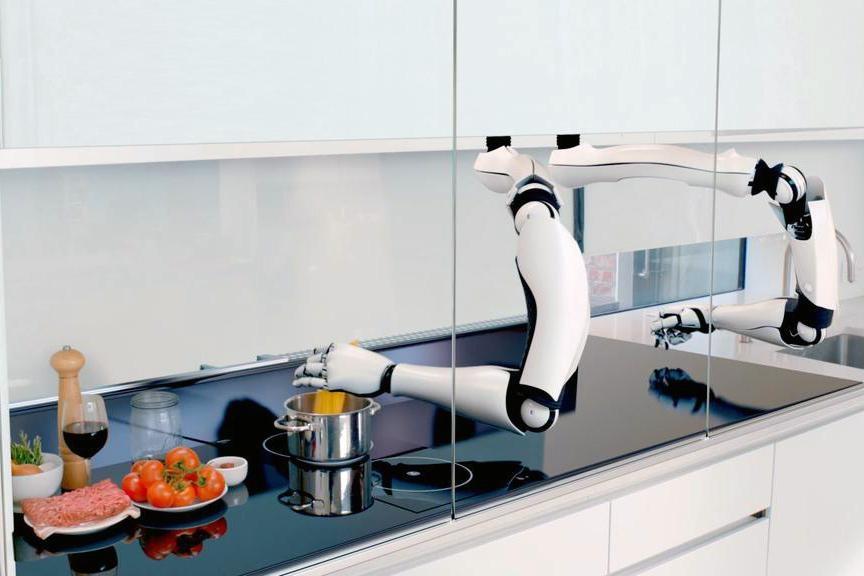
How many times have you turned to YouTube to figure out how to do something? The site is chock full of instructional videos on just about anything you can imagine. Soon, robots might do the same thing, thanks to a new project working on parsing YouTube videos.
Read The Article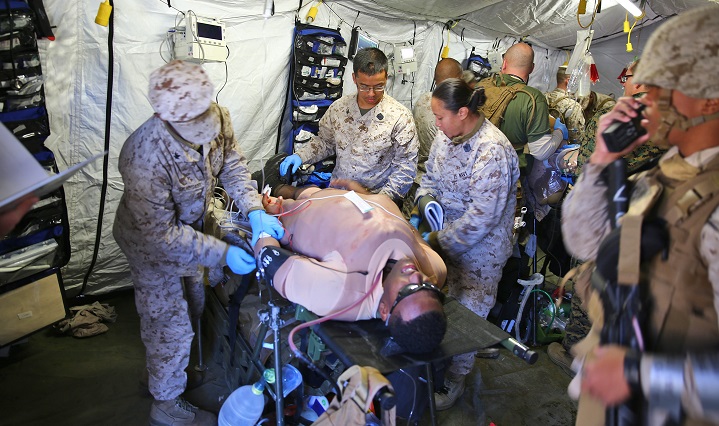
PORTSMOUTH, Va. — The staff of the Healthcare Simulation and Bio Skills Training Center at Naval Medical Center Portsmouth continually proves they are trailblazers of military medicine through their dedication to medical education and readiness.
The Combat Extremity Surgery Course held recently was no exception.
Read The Article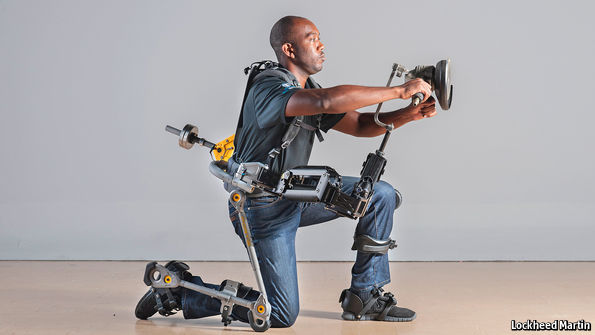
SOLDIERS kitted up in expectation of their first taste of combat often reflect on how much of their bodies a bulletproof jacket and helmet do not cover. About 81%, it turns out. More armour than this would be impractically heavy. Indeed, many soldiers already carry at least 50kg of kit and supplies, which is more than double what America’s Army Science Board advises as the limit if damage to a soldier’s skeleton and musculature is to be avoided.
Read The Article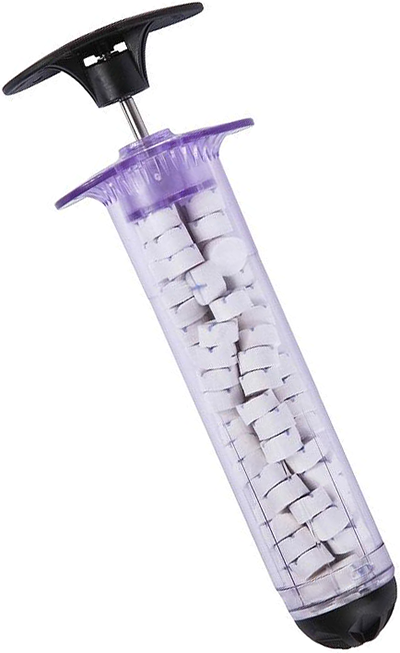
In what may be a timely move, the FDA has issued clearance to RevMedX to introduce its XStat Rapid Hemostasis System for treating gunshot wounds in the civilian population. Last year the device received FDA clearance to be used on the battlefield, but now ambulances in the U.S. will have the option of carrying XStats as well.
Read The Article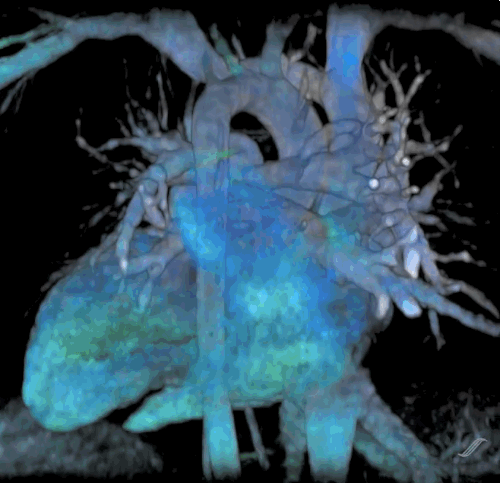
While conventional MRI scans can produce highly detailed images of our internal organs, the process can take up to 45 minutes -- not the sort of delay you want when suffering from a heart attack. However, a new scanning technology from GE promises to cut that time by up to 30 minutes and deliver near-real time videos of the heart in unprecedented detail.
Read The Article
Every Sci-Fi enthusiast knows that real robots of the future look, act, and experience the world like their human creators. Witness David in Prometheus and Ava in Ex Machina. Getting to this stage of evolution involves a lot more than internal sensors of joint position. It requires a humanoid physiology — realistic responses to running up a flight of stairs, for example — as reflected in breathing rate and depth, heart rate, systolic and diastolic blood pressure, body temperature, and energy expenditure among many other physiologic parameters.
Read The Article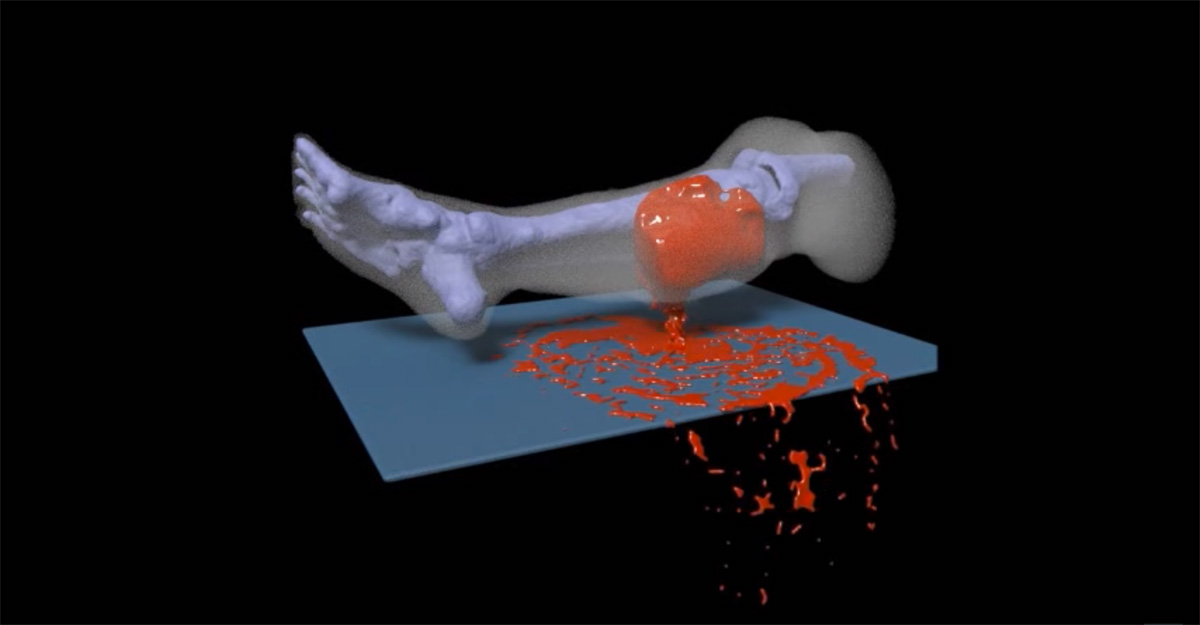
Field medics have ways to practice their craft before they're helping soldiers on the battlefield, but it's hard for them to understand how wounds work until they're involved in a life-or-death rescue. UCLA scientists may have the tool these medics need, however: they've developed the first detailed injury simulation to show medics what to expect.
Read The Article
ARLINGTON, Va. — The next big thing in disease detection — a device that could stop the next Ebola outbreak in its tracks — looks like a five-pound block of gray plastic, with five buttons, a small monochrome screen, and a slot in the front for a medical sample.
Read The Article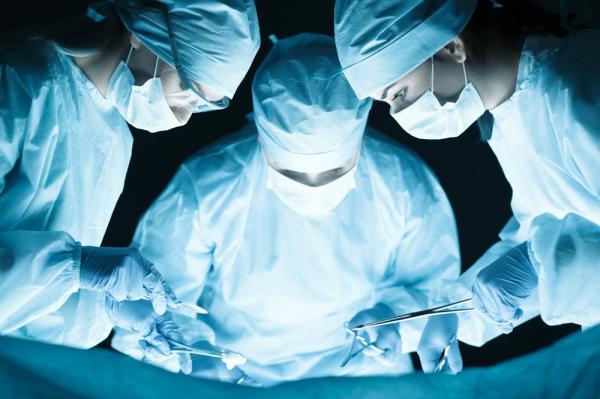
WARSAW, Poland, Nov. 21 (UPI) -- Doctors in Poland used a virtual reality system combining a custom mobile application and Google Glass to clear a blocked coronary artery, one of the first uses of the technology to assist with surgery.
The imaging system was used with a patient who had chronic total occlusion, a complete blockage of the artery, which doctors said is difficult to clear using standard catheter-based percutaneous coronary intervention, or PCI.
Read The Article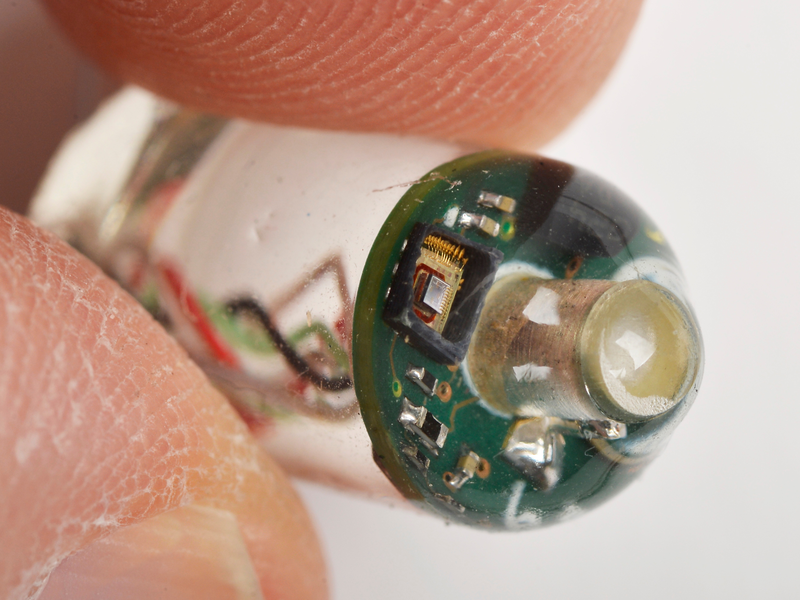
After testing all the pieces of a tiny pill-size device, Albert Swiston sent it on a unique journey: through the guts of six live Yorkshire pigs.
Pig bodies are a lot like human bodies, and Swiston wanted to know whether the device would be able to monitor vital signs from inside a body. It did.
Read The Article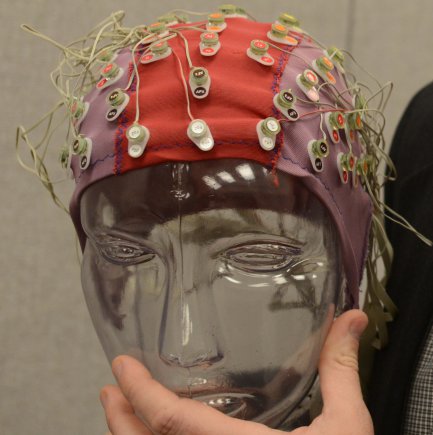
ABERDEEN PROVING GROUND, Md. (Army News Service, Nov. 15, 2015) -- New and complex technology for Soldiers can tax their mental ability, since the brain has finite processing capability, said David Hairston, a neuroscientist.
Read The Article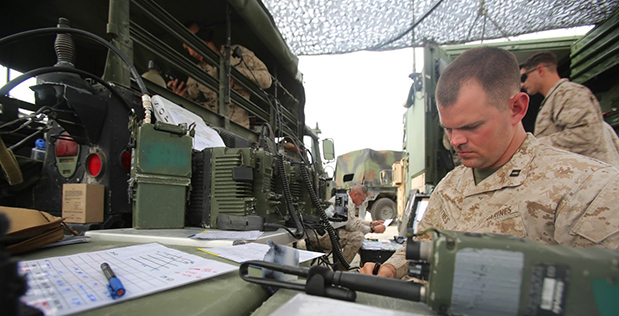
DARPA has awarded a contract for the third and final phase of its Advanced RF Mapping program, known as RadioMap, which seeks to provide real-time awareness of radio spectrum use across frequency, geography and time. Akin to smartphone maps that show color-coded current traffic conditions, RadioMap is developing technology that visually overlays spectrum information on a map enabling rapid frequency deconfliction and maximizing use of available spectrum for communications and intelligence, surveillance and reconnaissance (ISR) systems.
Read The Article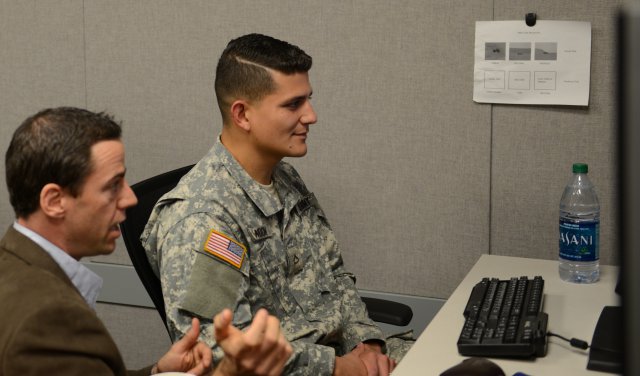
In an Army Research Laboratory facility here called "The MIND Lab," a desktop computer was able to accurately determine what target image a Soldier was thinking about.
MIND stands for "Mission Impact Through Neurotechnology Design," and Dr. Anthony Ries used technology in the lab to decode the Soldier's brain signals.
Read The Article
A strategy designed to improve memory by delivering brain stimulation through implanted electrodes is undergoing trials in humans. The US military, which is funding the research, hopes that the approach might help many of the thousands of soldiers who have developed deficits to their long-term memory as a result of head trauma. At the Society for Neuroscience meeting in Chicago, Illinois, on October 17–21, two teams funded by the Defense Advanced Research Projects Agency presented evidence that such implanted devices can improve a person’s ability to retain memories.
Read The Article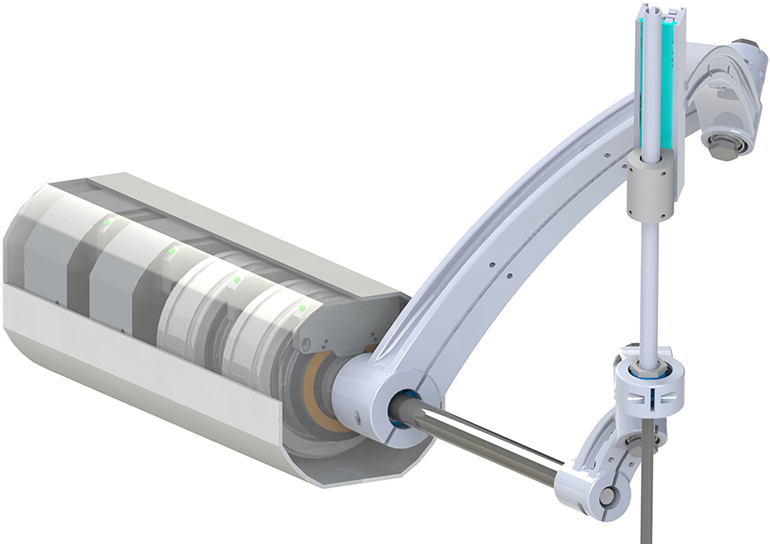
At the Fraunhofer Institute for Manufacturing Engineering and Automation in Mannheim, Germany and the surgical clinic of the University Hospital of Mannheim collaborators have developed a robotic surgical assistant that can operate certain intraop tools while controlled by the surgeon using hand gestures.
Read The ArticleOne of the biggest challenges of growing replacement tissues for therapeutic uses is getting blood vessels to properly form throughout a construct so that all the cells are perfused and oxygenated. Researchers from Rice University and University of Pennsylvania are overcoming this challenge by building blood vessel constructs that can interface with natural blood vessels and be used as implants to grow new tissues.
Read The Article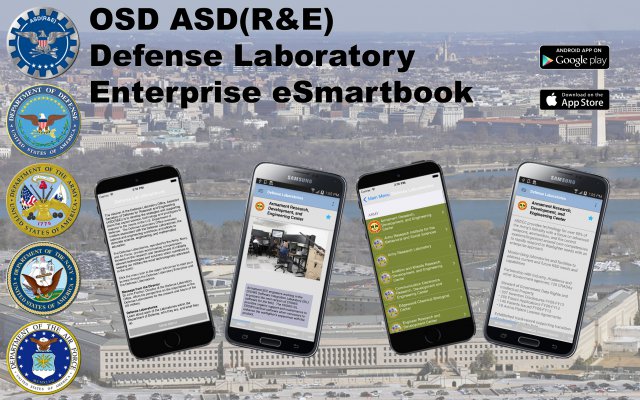
If you want to know what’s going on with the Defense Department’s research laboratories, the Army now has an app for that.
The service’s Armament Research, Development and Engineering Center, or ARDEC, at Picatinny Arsenal, N.J., has developed a new mobile application that gives users, including the general public, access to the research of laboratories throughout DOD, the center said in a release.
Read The Article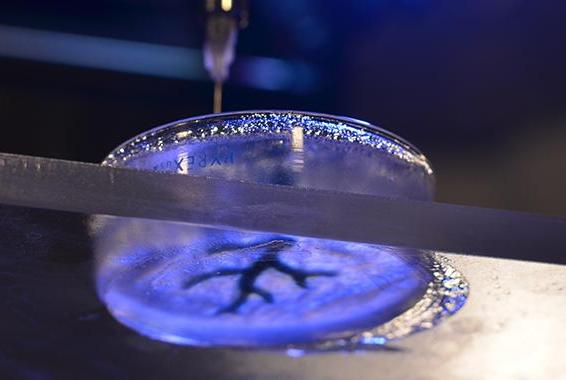
Hard objects are created on 3-D printers by using thin layers of plastic or metal, slowly constructing the object. For several years, doctors have made hard implants using the printers, but soft tissues such as organs are more difficult because the materials used for them can't support their own weight.
Researchers at Carnegie Mellon University may have solved the problem, however, by devising a method of 3-D printing soft objects by layering the materials inside a special type of gel.
Read The Article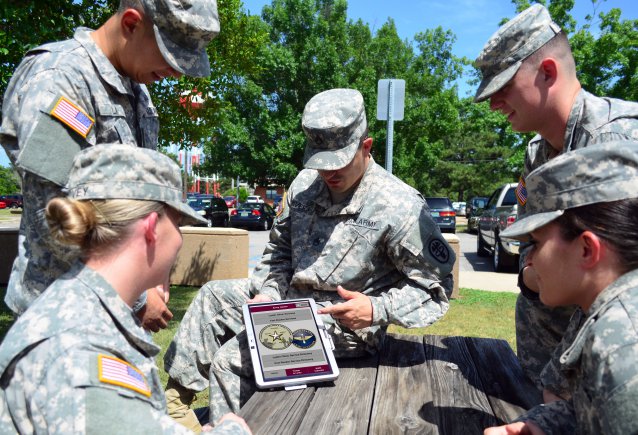
Do you know where to find running trails around here? How about where Bible studies are located? Did you know there is a 5K coming up soon? What about the operational hours for the post library?
Read The Article
TORONTO, Ontario — The Humber River Hospital in Toronto opened on Oct. 18 to make it the first fully digital hospital in North America. The new, 1.8 million-square-foot hospital now has state-of-the-art-medical equipment, which was designed to improve patient care. The hospital will be able to serve more than 850,000 people from the Toronto area in the new facility. On Sunday Oct. 18, 350 patients were moved to the new hospital, according to a release from Humber River Hospital.
Read The Article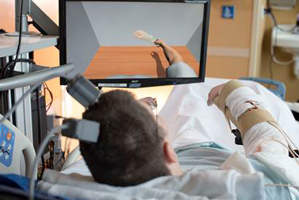
Scientists at Case Western Reserve University in Ohio say they’ve used electronics to get around a paralyzed man’s spinal injury, permitting him to use an implant in his brain to move his arm and hand.
The test represents the first time that signals collected in the brain have been conveyed directly to electrodes placed inside someone’s arm to restore movement, says Robert Kirsch, a biomedical engineer at Case Western. He also directs the Cleveland FES Center, which develops technologies for people with paralysis.
Read The Article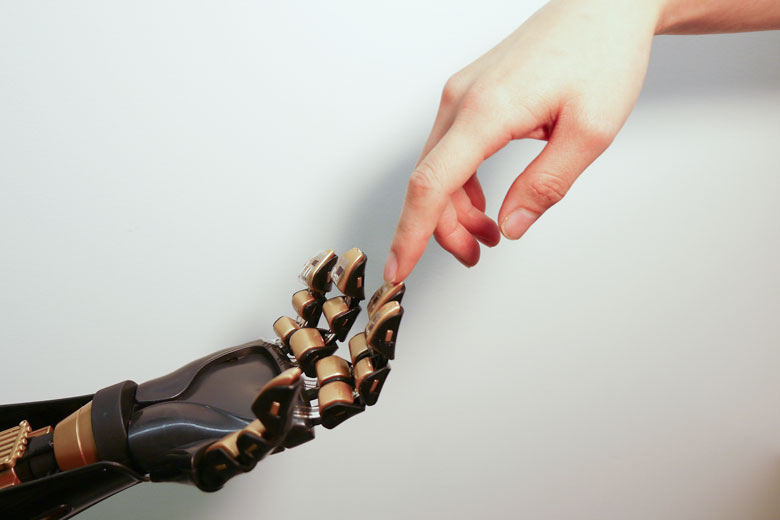
Stanford engineers have created a plastic skin-like material that can detect pressure and deliver a Morse code-like signal directly to a living brain cell. The work takes a big step toward adding a sense of touch to prosthetic limbs.
Read The Article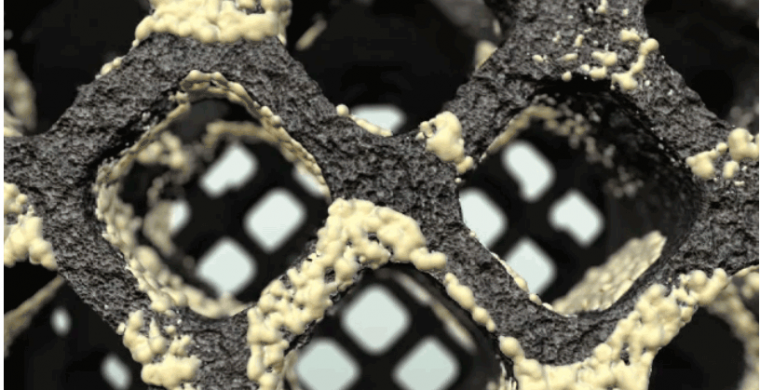
K2M’s Lamellar Titanium Technology uses an advanced 3D printing method to create structures that were once considered impractical with traditional manufacturing techniques. Starting with a titanium powder, the implants are grown through the selective application of a high-energy laser beam, allowing for the incorporation of both a porosity and surface roughness that pre-clinical data have associated with bone growth activity.
Read The Article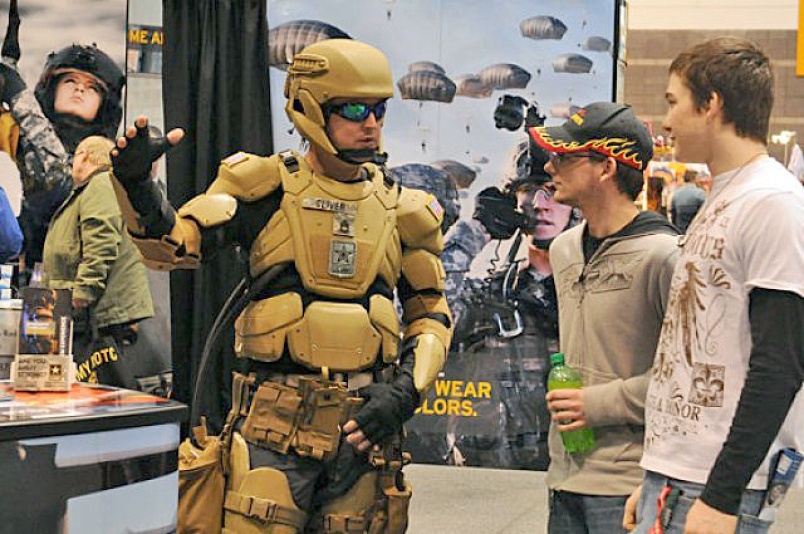
The Pentagon is poised to put a real-life “Iron Man” on the battlefield in under two years’ time, and military officials say the state-of-the-art, sensor-embedded suit of armor will give ground troops a significant advantage unmatched this side of the Marvel universe.
Read The Article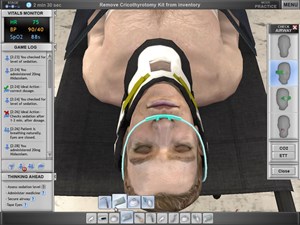
RALEIGH, N.C., Oct. 8, 2015 (GLOBE NEWSWIRE) -- The Virtual Heroes Division of Applied Research Associates, Inc. has released HumanSim: Sedation and Airway, a 3D virtual trainer for administering emergency anesthesia and managing breathing. This marks the first time the software, which Virtual Heroes developed for the Army's Telemedicine & Advanced Technology Research Center (TATRC), is available to the public.
Read The Article
A Harvard medical pioneer calls it "astounding" — an "incredible achievement" and a "quantum leap forward" in the battle against cancer, autism, Parkinson's and Alzheimer's.
What's going on? Scientists at Ohio State University say they've figured out a way to grow the genetic equivalent of a nearly complete embryonic human brain.
Read The Article
Battlefield medics and paramedics rely on chemical-infused bandages to help stem blood loss and treat wounds. However, the blood itself is frequently their worst enemy -- it takes those chemicals away from where they're needed. Those first responders may soon have a much smarter solution, though. Researchers have developed bandages with a combination of powdered marble, acid and enzymes that fizzes on contact with blood, using the resulting bubbles to transport microparticles toward deeper vessels that need clotting. The particles currently travel in all directions, but scientists envision using an endoscope to send the fizz to where it's most useful.
Read The Article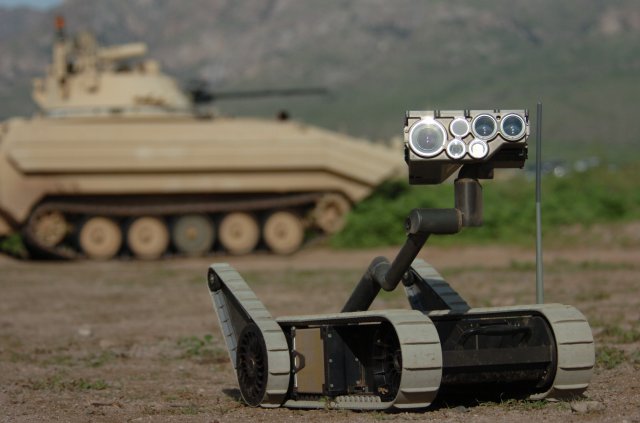
WASHINGTON (Army News Service, Sept. 22, 2015) -- Most Americans have seen at least one war movie, where at some point a fresh-faced young private is hit with some shrapnel. From the ground, he calls out for the unit medic - another young guy, from another small town, whose quick reaction and skill just may save his life.
Read The Article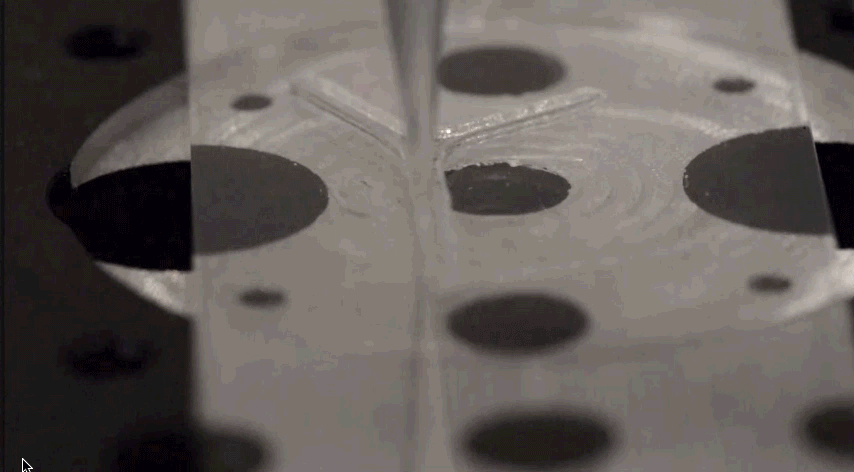
After a traumatic injury like a car crash or a severe bacterial infection, patients can often suffer from painful and sometimes even paralyzing nerve damage. This damage is long lasting, because nerves regenerate slowly, if at all. Now a team of researchers has devised a way to 3D print customized scaffolds that help nerves regenerate, according to a paper published today in the journal Advanced Functional Materials.
Read The Article
Population health brings new momentum to using health information technology to improve health and healthcare through a new emphasis on treating and managing the health of a targeted population of patients with a focus on wellness and chronic care management, which will drive value to both the patient and the healthcare industry. This proactive approach to managing the health of specific patient groups comes to the forefront at the HIMSS Population Health Summit, which occurs simultaneously with the mHealth Summit and the CyberSecurity Summit. These three Summits make up the HIMSS Connected Health Conference, scheduled for Nov. 8-11 at the Gaylord National Resort in the Washington, DC area.
TATRC's Holly Pavliscsak, MHSA, spoke.
Read The Article
Researchers at MIT and Boston Children’s Hospital have developed a system that can take MRI scans of a patient’s heart and, in a matter of hours, convert them into a tangible, physical model that surgeons can use to plan surgery.
The models could provide a more intuitive way for surgeons to assess and prepare for the anatomical idiosyncrasies of individual patients. “Our collaborators are convinced that this will make a difference,” says Polina Golland, a professor of electrical engineering and computer science at MIT, who led the project. “The phrase I heard is that ‘surgeons see with their hands,’ that the perception is in the touch.”
Read The Article
ST. LOUIS, September 14, 2015 — The Defense Advanced Research Projects Agency’s "Wait, What?" Future Technology Forum wrapped up Friday with a remembrance of those who died on 9/11 and presentations covering the bleeding edges of everything from extraterrestrial life and cold molecules to lighting up the living brain.
More than 1,400 scientists and engineers engaged on those and many other topics during the sold-out Sept. 9-11 forum. Writing in the Wait, What? activity feed, one attendee likened it to the best science fair ever, on steroids.
Read The Article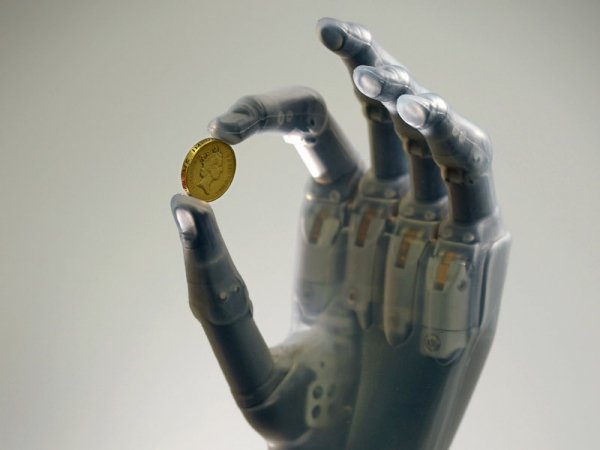
Prosthetic limbs have advanced in leaps and bounds over the past few decades, with some able to be controlled by the user's brain and others looking almost like the real thing.
There's one thing, however, that most prosthetic limbs don't have, and that is feeling. A prosthetic hand has been developed by the Defense Advanced Research Projects Agency that uses neurotechnology to allow paralyzed patients to "feel" objects through their prosthetic. The prosthetic is so sensitive that sensations from each finger can be discerned.
Read The Article
Losing a flash drive full of family photos is unfortunate; losing an encryption key that gives access to sensitive data could be a catastrophe. So researchers at Xerox’s PARC have developed chips that can self-destruct on command, making them completely unusable once they shatter.
The key to making chips that can just shatter into a million pieces on command is using a material that’s best known for shattering: glass. In this case, the researchers started with Corning’s Gorilla Glass, but modified it to become tempered glass under extreme stress.
Read The Article
WASHINGTON, September 8, 2015 — Defense Secretary Ash Carter will travel to St. Louis tomorrow to speak with workers at Boeing and to kick off the Defense Advanced Research Projects Agency’s “Wait, What? Forum,” Pentagon Press Secretary Peter Cook said today.
The trip allows the defense secretary to highlight the many ways private advanced technology firms can work with the department, Cook said.
Read The Article
Lately, we’ve been working to understand the implications of two seemingly disparate advancements.
The first concerns an action taken by the Department of Defense this summer. The DOD let a massive new contract for its Defense Healthcare Management System to the team of Cerner, Leidos and Accenture Federal. The project’s goal is to build a national health information network that will allow health records to follow patients no matter where they are – from a VA hospital, to a tent in a war zone, to a retail clinic, to an app on their smart phones.
Read The Article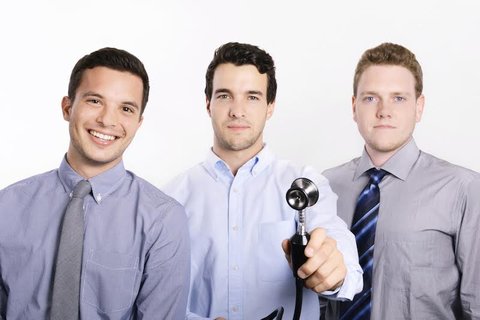
The stethoscope, that iconic tool of doctors, has been upgraded several times since it was invented two centuries ago. Eko Devices, a start-up led by three recent graduates of the University of California, Berkeley, is betting that it is time for another innovative overhaul.
Read The Article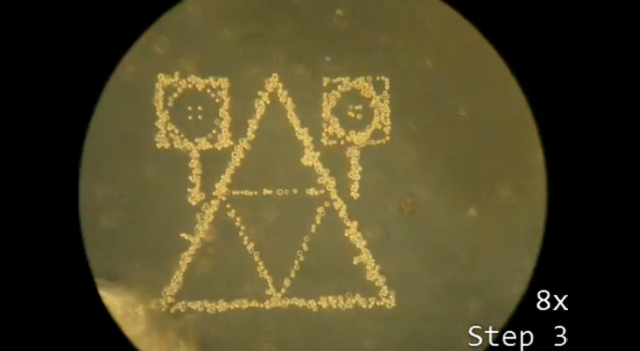
One of the great hopes for stem cells is that they'll allow us to eventually replace injured or damaged tissues. But there's a big gap between the cells of stem cells and anything resembling an organ. Organs are complex, three-dimensional structures populated by multiple cell types. Getting a bunch of cells to form these structures is a significant challenge.
Read The Article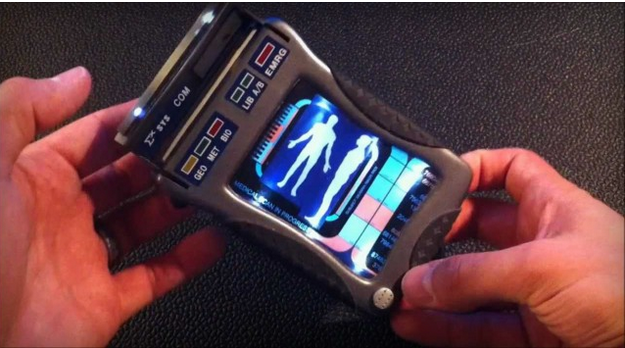
With public medical systems across the developed world floundering thanks to insufficient funding and a graying population base, it’s becoming increasingly clear the old model of government-supported healthcare is headed for crisis. While this has caused alarm not dissimilar from that of “peak oil,” we have seen a subsequent upswell in the number of technologies promising to revolutionize the way we practice medicine and making it sustainable for the future. In line with this trend, researchers at John Hopkins School of Medicine released a paper in the September issue of the Annals of Biomedical Engineering revealing that they are in the final stages of perfecting a handheld device called MouthLab that would enable hospital-level vital sign analysis to be done from home without the supervision of medical specialists.
Read The Article
FORT LAUDERDALE, Fla. (Aug. 26, 2015) -- During a break between meetings at the 2015 Military Health System Research Symposium, or MHSRS, Lt. Col. Jennifer Hatzfeld spoke about the concept of innovation in the field of mobile trauma care.
"I'm excited because I think we're at a point where clinicians can see solutions," said Hatzfeld, manager of the U.S. Army Medical Research and Materiel Command's En Route Care Portfolio.
Read The Article
There aren't a lot of physicians living in Michigan's Upper Peninsula, and even fewer specialists. So when Richard Armstrong, MD, has a tough question, he jumps online, logs into his SERMO account, and connects with a network of physicians around the world in a manner of minutes.
Read The Article
“These three organizations are nationally renowned institutions that broaden our connection with other federal health partners, and with global health organizations,” said Air Force Lt. Gen. Douglas Robb, DHA director. “Whether it’s identifying how to prevent or stem the outbreak of disease; doing the challenging work to help determine where our research and clinical practices can be directed to increase survivability; or simply allowing us to learn through history, these organizations advance our ability to support our warfighters and everyone who we serve.”
After its transition, AFHSC is becoming the Armed Forces Health Surveillance Branch, part of DHA’s Healthcare Operations Directorate. Its mission is to protect the health and readiness of the military against illness or injury during training exercises as well as deployment. Read The Article

Head trauma can cause brain damage that has serious implications for long-term health, but it can be difficult to notice such injuries when they occur. To solve this problem, a team of researchers has a developed a material that changes to different colors depending on how hard it is hit.
They hope to use this material in protective headgear, protecting people such as soldiers and sports players by providing an indication when an impact could cause serious damage.
Read The Article
WASHINGTON (Army News Service, Aug. 17, 2015) -- ArmyFit, a comprehensive, online resource site at armyfit.army.mil, just added three "new and exciting features," Capt. Kristin Saboe said.
ArmyFit, which now synchs to personal readiness devices, is accessible by smartphones and has experts standing by to answer health and fitness questions, Saboe said.
Read The Article
WASHINGTON, Aug. 13, 2015 – “In your operations … in sea-, air- and land-unique environments, unfriendly as they may be … understand that we’re there with you or ahead of you.”
That’s military medicine’s pledge to operating service members, as articulated by Navy Rear Adm. Bruce Doll. The admiral is dual-hatted as director of the Research, Development and Acquisition Directorate, one of six directorates at the Defense Health Agency, and as the deputy commander of the U.S. Army Medical Research and Material Command.
Read The Article
"An army marches on its stomach." That's a line attributed to Napoleon Bonaparte, who put great thought into how his armies were supplied with food. Since the end of his era, this logistical trend has only increased. The US Army in particular has spent vast sums of money and manpower developing the best possible means of assembling, preserving, and distributing food.
Read The Article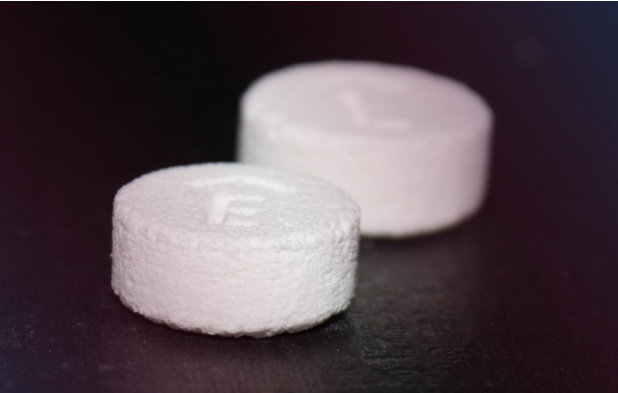
Think of it as a "Star Trek" replicator for pills.
“Imagine your printer like a refrigerator that is full of all the ingredients you might require to make any dish in Jamie Oliver's new book,” chemist Lee Cronin says in a 2012 TedGlobal talk. Cronin, a professor at the University of Glasgow, goes on to describe how this idea could be applied to drugs, such as ibuprofen, by enabling a 3-D printer to follow a recipe given by a pharmaceutical company and produce whatever is needed, on the fly from a set of chemical inks. Read The Article
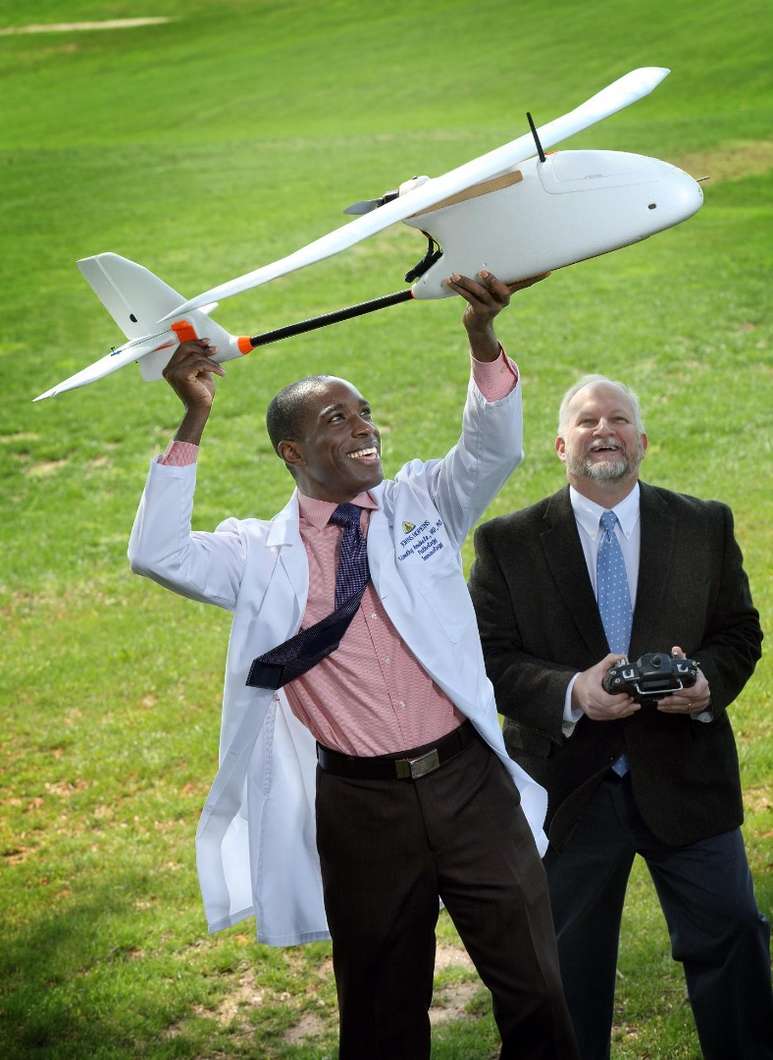
We’ve already heard about drones being used to deliver pharmaceuticals to patients in remote locations, but scientists from Johns Hopkins University and Uganda’s Makerere University are now looking at the other end of the picture – using them to deliver remotely-located patients’ blood samples to labs in larger centers. According to a proof-of-concept study conducted by the researchers, the little unmanned aircraft should be able to do the job just fine.
Read The Article
WASHINGTON, July 29, 2015 – The award of the new modernization contract for electronic health records is a great opportunity to “save money, save time, and most importantly, save lives,” Christopher A. Miller, the Defense Healthcare Management Systems program executive officer said today.
In a culmination of a more than two-year effort, the Defense Department today awarded a $4.3 billion contract to Leidos, Inc. Now begins the hard part: Putting the contract in place, Miller said. Read The Article

The Pentagon is poised within days to award one of the most coveted health information-technology contracts in history — the first phase of a deal that could ultimately be worth more than $10.5 billon over the 18-year life of the contract.
Read The Article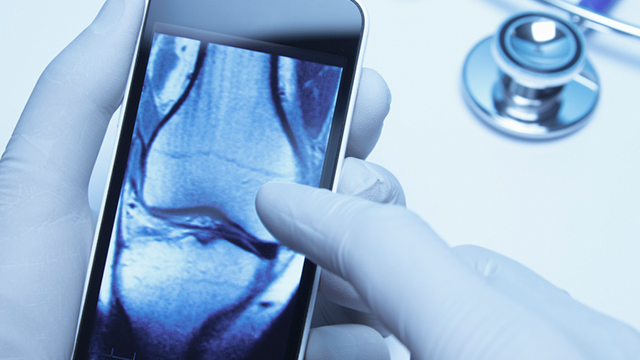
Today’s physicians have a host of new tools to choose from: you can carry an ECG around in your pocket, and scan radiology images on your phone. But the driving principle of care has not changed: the best care is care that patients have access to when and where they need it. Just like Dad’s old DeSoto, telemedicine is an essential tool to deliver care.
Read The Article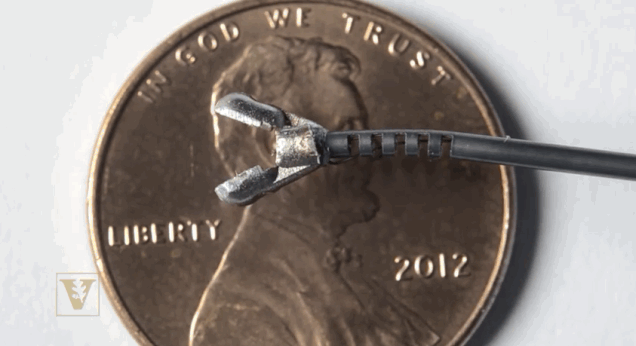
With the flick of a tiny mechanical wrist, a team of engineers and doctors at Vanderbilt University’s Medical Engineering and Discovery Laboratory hope to give needlescopic surgery a whole new degree of dexterity.
Read The Article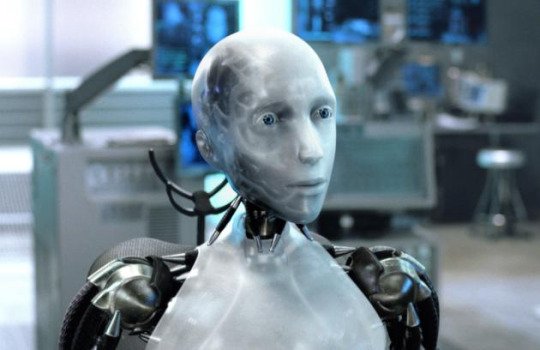
A robot in New York has passed the classic ‘wise men puzzle’ used to test whether a machine is ‘self-aware’.
The logic puzzle involves a fictional king who is set the task of choosing a new advisor and gathers the three wisest people in the kingdom. He tells them the test will be fair to all of them and then places either a blue or white hat on the head of each and tells them that the first to stand up and announce the colour of their own hat will become his advisor.
Read The Article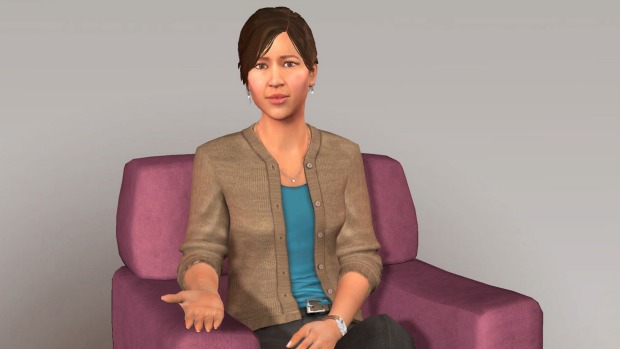
With her hair pulled back and her casual office attire, Ellie is a comforting presence. She's trained to put patients at ease as she conducts mental health interviews with total confidentiality.
She draws you into conversation: "So how are you doing today?" "When was the last time you felt really happy?" She notices if you look away or fidget or pause, and she follows up with a nod of encouragement or a question: "Can you tell me more about that?"
Read The Article
The Defense Health Agency was launched in October 2013 as a joint, integrated combat support agency that enables Army, Navy and Air Force medical services to provide a medically ready force in both peacetime and wartime. Technology plays a major role in DHA's initiatives to deliver integrated, affordable and high-quality health services to Military Health System (MHS) beneficiaries and drive greater integration of clinical and business processes. Contributing Editor Steve Watkins spoke with Mark Goodge, DHA's chief technology officer, about the agency's modernization efforts and emerging technologies that will change the delivery of health care to service members
Read The Article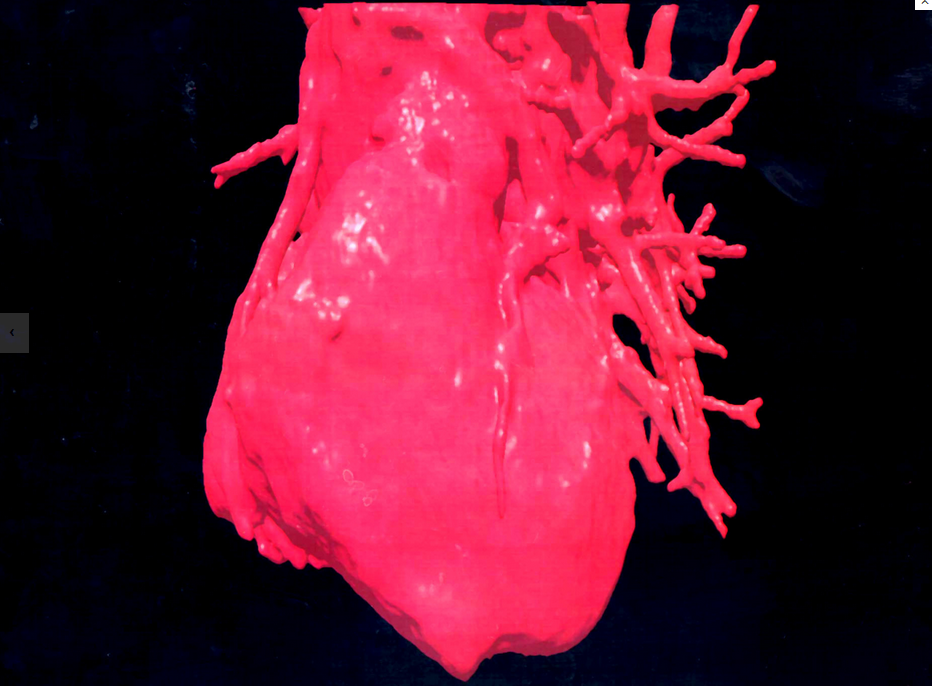
Scientists have made tiny human hearts that can actually beat from nothing — and they’re so small that they can barely be seen with the naked eye.
The hearts have been grown using only stem cells, for the very first time, the New Scientist reports. As such, it mimics the processes that happen when humans hearts’ grow for the first time — except it happens in a lab, at the prompting of researchers.
Read The Article
Traditional ultrasound allows doctors to see patients' hearts, but those photos are nowhere as detailed as they would like. Now, GE Healthcare has developed advanced software called "cSound" for its new cardiovascular ultrasound machines that can render realistic 4D -- that's 3D plus time -- heart images. GE claims cSound is so powerful, it can crunch a full DVD's worth of data in just a second. If it comes across any data it can't process immediately, it stores that info and uses algorithms to analyze it to generate images as close to the real thing as possible. The software also has built-in color maps that assigns specific hues to different tissues.
Read The Article
WASHINGTON, July 15, 2015 – Part of Defense Department Chief Information Officer Terry Halvorsen’s work these days involves launching the Pentagon’s first wireless network and managing the rollout of “secure enough” mobile devices, he told an audience here recently.
Halvorsen opened July 9’s DoD CIO Mobility Industry Day with keynote remarks to an audience of more than 600 attendees, about half of them from government and half from industry.
Read The Article
The ease with which hackers seem able to access password secured computer systems including airlines, major corporations — even the White House — it's little wonder that the security community is scrambling for alternatives. But even biometric locks that scan our irises, faces, and fingerprints can be broken if they're connected to a compromised computer. That's why Synaptics has developed a fully self-contained fingerprint scanner.
Read The Article
SAN ANTONIO (June 15, 2015) -- Mindfulness-based meditation and the military are generally two things that one would not associate with one another.
But on Fort Sam Houston, Texas, Dr. Valerie Rice, chief of the U.S. Army Research Laboratory's Human Research and Engineering Directorate Army Medical Department Field Element in San Antonio, has participated in the Army Study Program since 2012. She has led a study entitled "Evaluating Next Generation Resiliency Training using the Virtual World of Second Life" for the last four years.
Read The Article
Researchers at the Medical and Surgical Center for Retina have developed software that detects eye diseases such as diabetic macular edema using a smartphone. The system is aimed at general physicians who could detect the condition and refer the patient to a specialist.
Read The Article
Finding a job is difficult for veterans with posttraumatic stress disorder (PTSD) and individuals with severe mental illness, who have high unemployment rates even though many want to work.
The job interview—especially hard for those with mental illness—can be a major hurdle.
Read The Article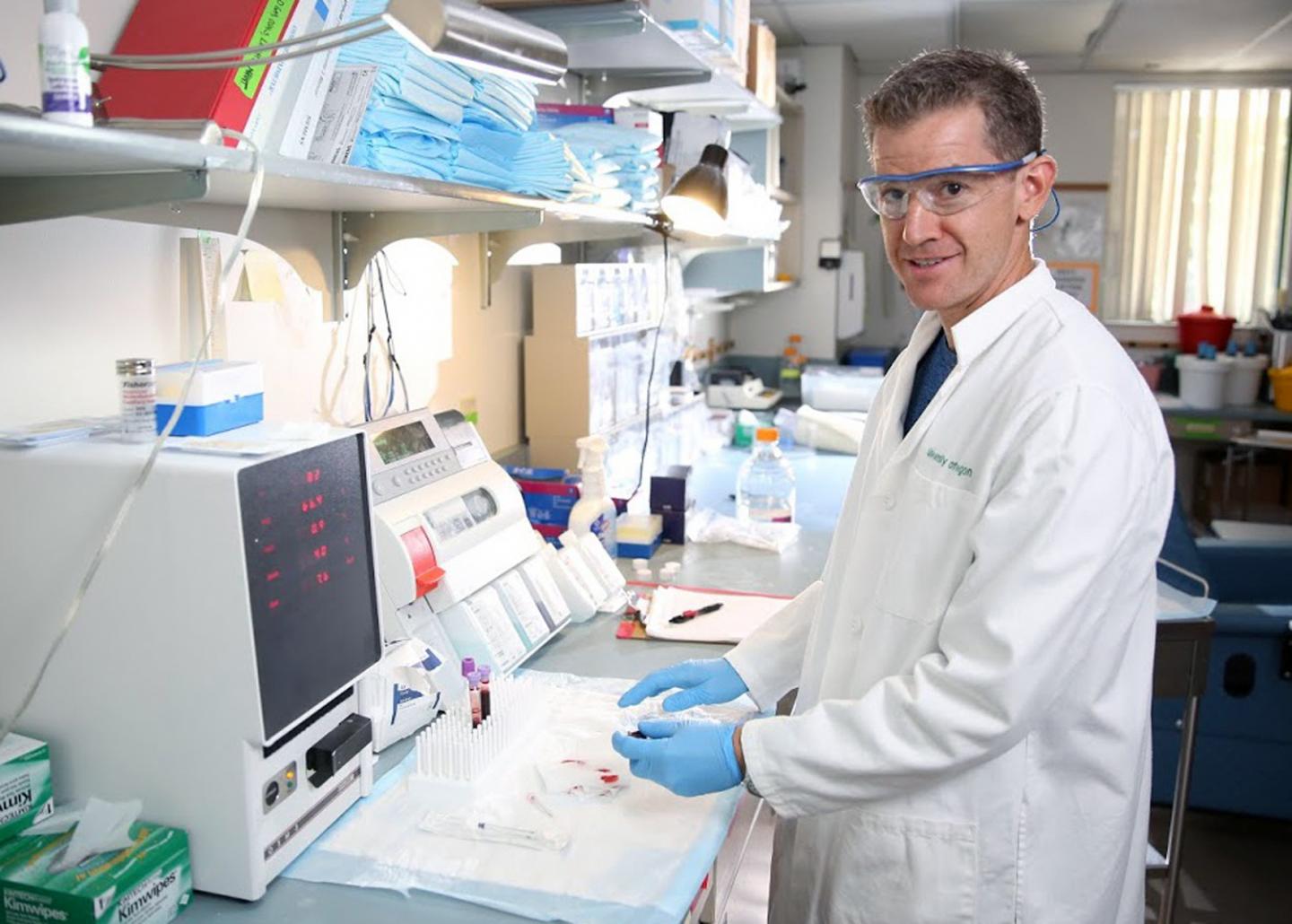
EUGENE, Ore. -- (June 30, 2015) -- A common heart feature long thought to have negligible effects on human health and performance may be problematic at high altitude, according to University of Oregon researchers.
Read The Article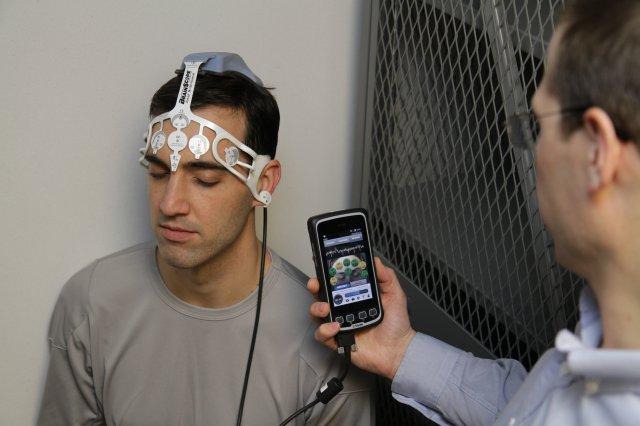
FORT SAM HOUSTON, Texas (June 25, 2015) -- A new handheld medical device for analyzing brain injuries has been cleared by the U.S. Food and Drug Administration, or FDA. In May 2015, the Ahead 200 was cleared by the FDA to help clinicians assess mildly-presenting head trauma patients.
Read The Article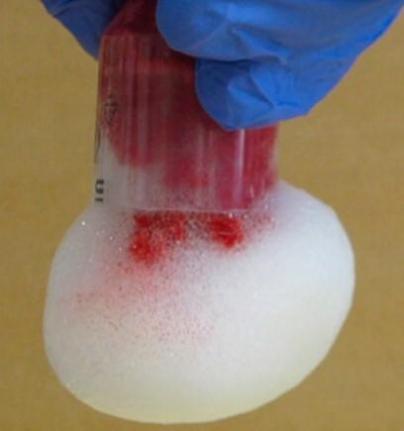
Researchers have developed a sprayable foam that stops bleeding by forming a self-supporting barrier, which they said could help save lives in cases of extreme trauma.
During major injuries to the torso, such as in car accidents or military combat, compression of injuries to prevent bleeding can make damage to major organs worse. Inability to stop bleeding in such cases is the most common cause of death from combat-related injuries and a leading cause of death among young adults.
Read The Article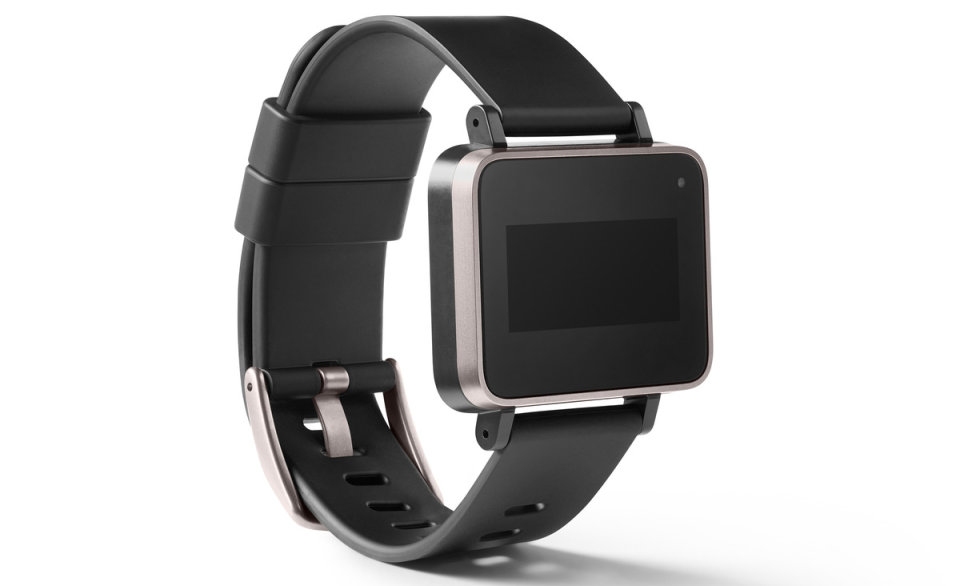
Google unveiled a new wearable today, though it won't be competing with the Apple Watch any time soon. Developed by Google X (the company's advanced research division), the experimental device is geared specifically for clinical research. It monitors not just the wearer's stats (including pulse, heart rhythm and temperature) but also environmental variables like light and noise levels as well.
Read The Article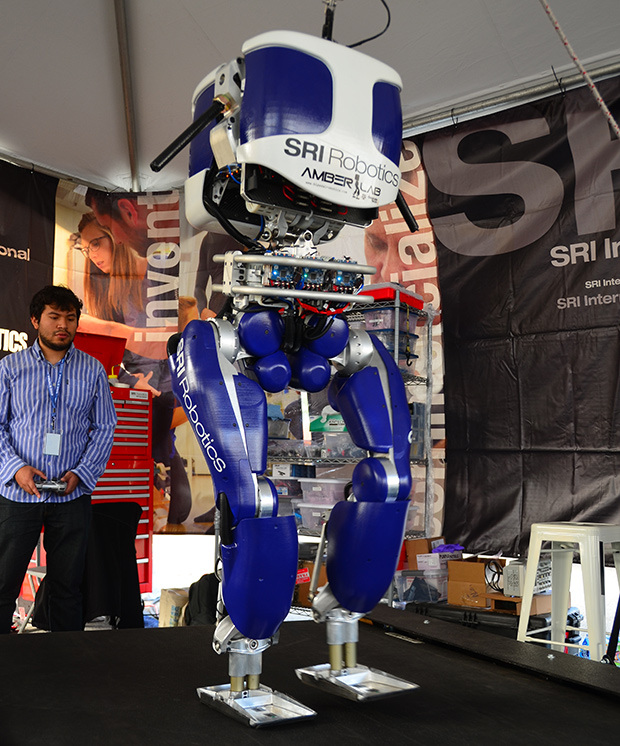
The DURUS is a highly efficient walking robot by SRI International that boasts an impressively low cost of transport. It was recently presented at the annual DARPA Robotics Competition where it was part of an endurance competition. DURUS is actually just the lower half of SRI’s humanoid robot named PROXI, which focuses on being a highly efficient alternative to other humanoid robot designs.
Read The Article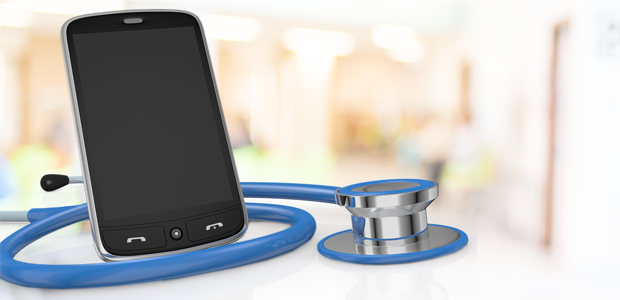
The Army’s Telemedicine and Advanced Technology Research Center is conducting market research for commercial software and other support to supplement its bi-directional secure mobile health system, the Mobile Health Care Environment. MHCE serves as a secure mobile messaging system that facilitates patient-to-provider, patient-to-system, provider-to-provider and provider-to-system interactions.
Read The Article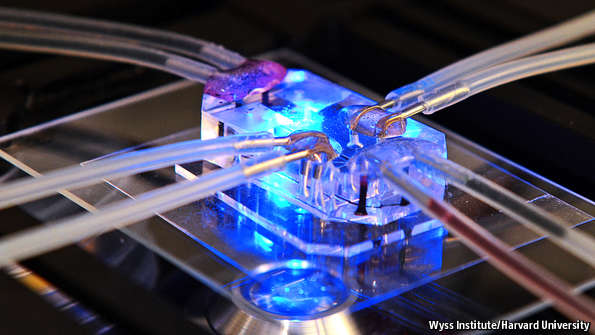
IN A recently opened laboratory just north of London, an experiment is under way to discover how the liver will respond to an new drug. Normally such a test would be carried out on liver cells cultured in rows of dishes or—as regulators require before approving a drug for clinical trial—in animals such as rats or dogs. But this experiment uses a small device about the size of a smartphone. It contains a miniature liver made from human cells and promises more reliable results. It is one of the first commercial versions of what bioengineers call an organ-on-a-chip.
Read The Article
In 2017, Dutch designer Joris Laarman will wheel a robot to the brink of a canal in Amsterdam. He'll hit an "on" button. He'll walk away. And when he comes back two months later, the Netherlands will have a new, one-of-a-kind bridge, 3-D printed in a steel arc over the waters.
Read The Article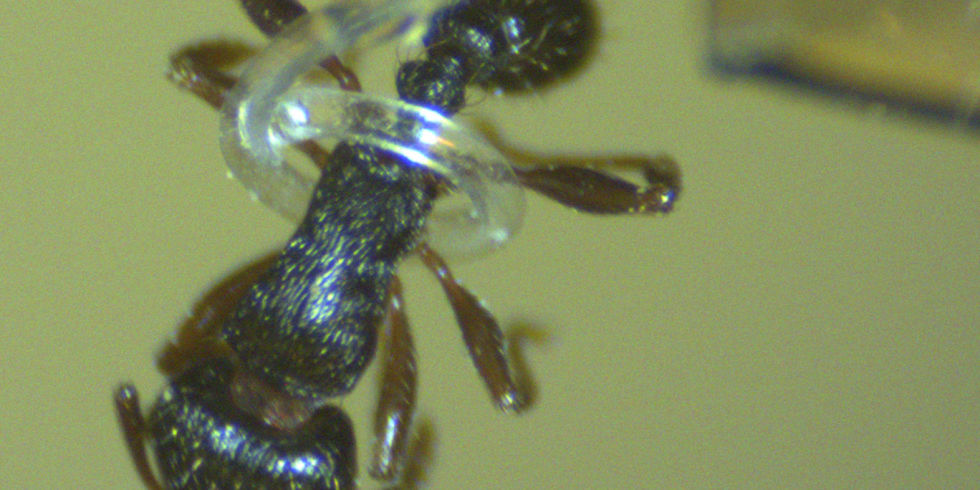
With a diameter just twice that of a human hair, they look more like short snips of fishing line than advanced robotic appendages. But these micro-tentacles can curl and grip. They can lasso an ant or scoop up a tiny fish egg. And they could give a robot of any size an astonishingly gentle but precise grasp.
Read The Article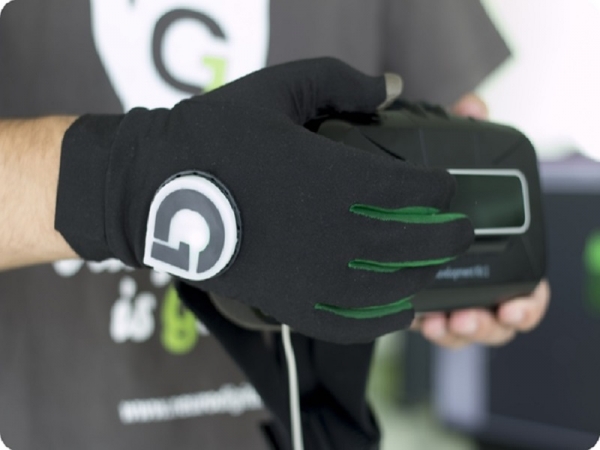
While virtual reality users may be able to see things soon thanks VR headsets such as Microsoft's HoloLens, they will not be able to touch and feel the virtual objects.
However, that is about to change thanks to smart gloves dubbed Gloveone, which will enable users to feel sensations such as rainfall, heat, flitting of a butterfly, shapes (and even weight of an object) when interacting with virtual objects.
Read The Article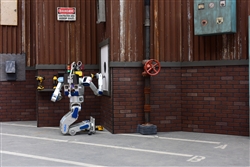
POMONA, Calif., June 7, 2015 – A robot from South Korea took first prize and two American robots took second and third prizes here yesterday in the two-day robotic challenge finals held by the Defense Advanced Research Projects Agency.
Read The Article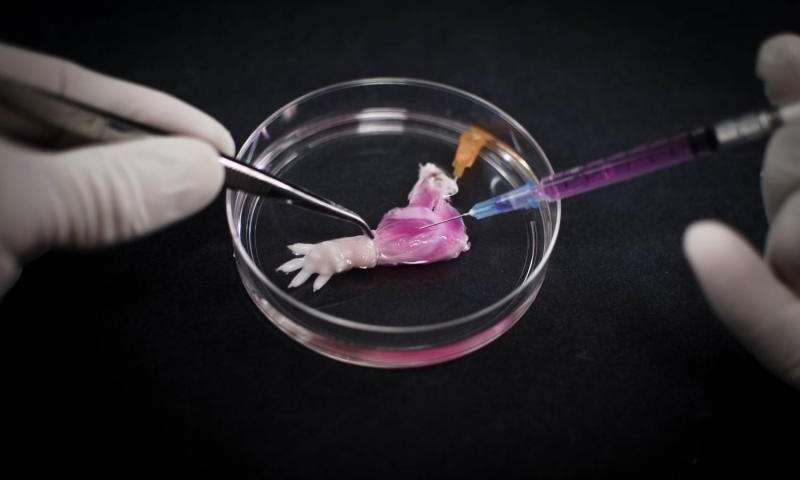
A team of Massachusetts General Hospital (MGH) investigators has made the first steps towards development of bioartificial replacement limbs suitable for transplantation. In their report, which has been published online in the journal Biomaterials, the researchers describe using an experimental approach previously used to build bioartificial organs to engineer rat forelimbs with functioning vascular and muscle tissue. They also provided evidence that the same approach could be applied to the limbs of primates.
Read The Article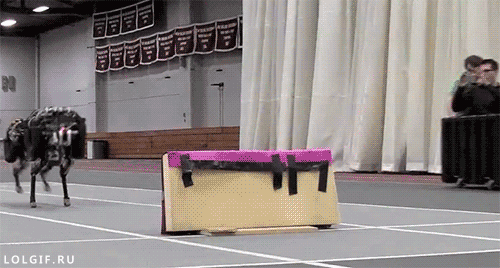
In case just being a headless cheetah robot wasn't scary enough, a group of researchers at the Massachusetts Institute of Technology (MIT) have now given their robot the ability to autonomously detect oncoming objects and jump over them.
Read The Article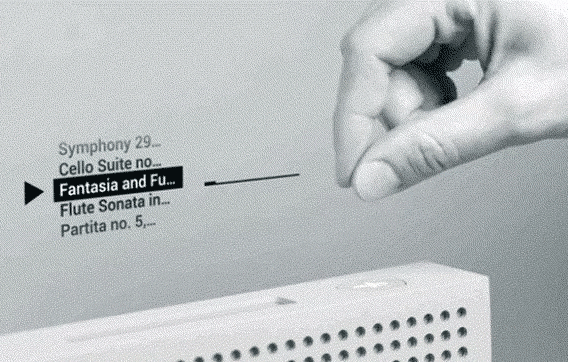
The days of swiping a finger against a glass screen might soon seem as antiquated as dialing numbers on a rotary telephone.
Read The Article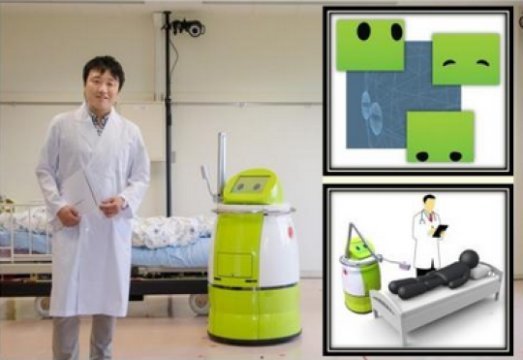
Given the threat of a massive earthquake striking Japan, researchers have organized a cooperative project team to develop a new robot. They set about determining the factors that are most important to hospital patients in modern society, after which they set about developing the world's first medical round robot capable of job-sharing, making more time for face-to-face nursing care.
Read The Article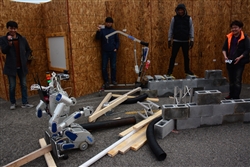
WASHINGTON, May 27, 2015 – In eight days, 25 human-robot teams will compete on the rubble-strewn field of a mock disaster, the robots driving cars, using tools and communicating with their human partners over degraded communication links, just like in a real disaster.
Read The Article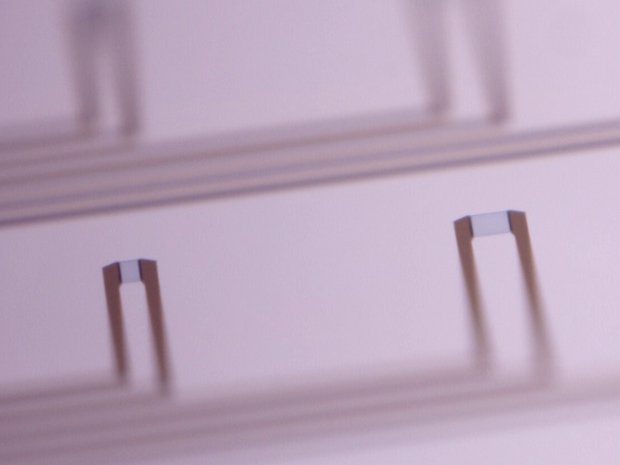
A new type of implantable electrode can get much more sensitive readings of brain waves and cost substantially less, according to a scientist studying the device. Organic electrochemical transistors (OECTs) consist of conductive polymers and liquid electrolytes, which could make for an easy interface between, say, the surface of the brain and conventional silicon electronics.
Read The Article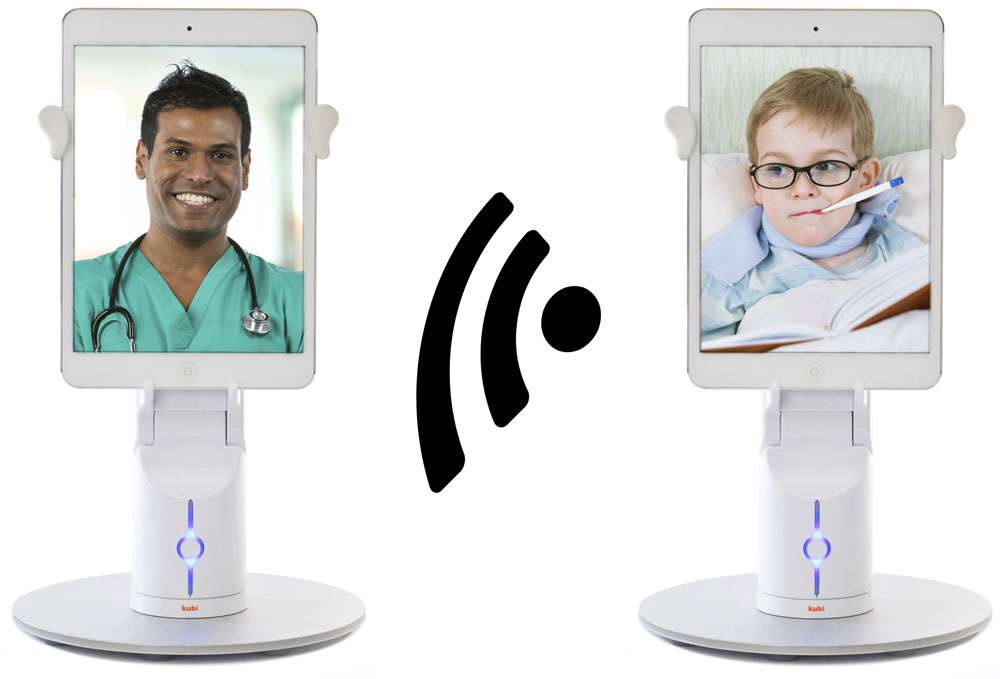
Revolve Robotics and Swymed have collaborated to create a HIPAA compliant telepresence device called Kubi that can stream medical data. This compliance is a big deal: no longer do MDs have to rely only upon what they see, or think they see, to make a diagnosis; they can use data streaming directly to the app to help make decisions. In smaller rural hospitals or even in ambulances, where a specialist cannot be physically there, this is going to be the best alternative.
Read The Article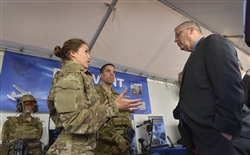
WASHINGTON, May 14, 2015 – Robots, medical advances, high-tech versions of warfighter tools and more were on display today at the Pentagon during the Defense Department’s first “Lab Day.”
Some of the department’s top officials also were there, including Deputy Defense Secretary Bob Work and Undersecretary of Defense for Acquisition, Technology and Logistics Frank Kendall, who hosted the event.
Read The Article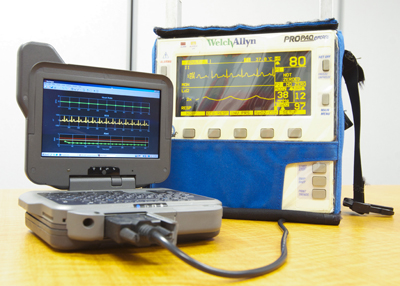
Automated analysis of the vital signs commonly monitored in patients being transported to trauma centers could significantly improve the ability to diagnose those with life-threatening bleeding before they arrive at the hospital, potentially saving their lives. In the May issue of the journal Shock, a research team from Massachusetts General Hospital (MGH), the U.S. Army, air ambulance service Boston MedFlight, and two other Boston trauma centers report successful field testing of a system that simultaneously analyzed blood pressure, heart rate, and breathing patterns during emergency transport, finding that it accurately detected most cases of life-threatening bleeding in a fully automated fashion.
Read The Article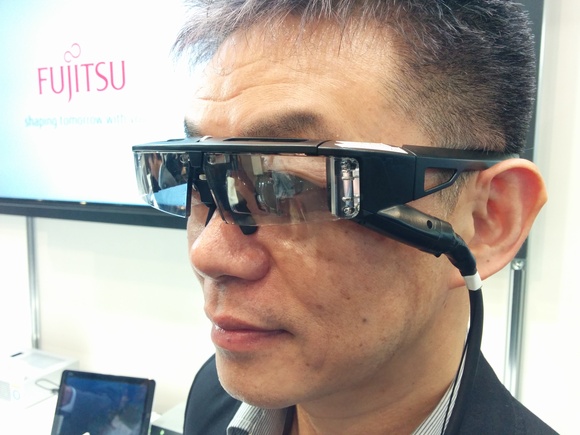
Fujitsu has developed smartglasses that project imagery directly onto the user’s retina with a laser, instead of using small LCD screens like other wearables.
The prototype, being shown off at a Fujitsu technology expo in Tokyo this week, can be linked to a mobile device or a camera mounted on the glasses.
Read The Article
Surely there is no one who likes needles. There are those people that when have to extract blood, watch on the other side, or even lose consciousness. The blood extraction isn’t very pleasing experience, especially when the process is done by someone who is practicing. After few unsuccessful attempts and cracked veins, the extraction will be successful, but your hand and your veins might be destroyed.
Read The Article
Researchers at the Wake Forest School of Medicine have created 3D Printed beating artificial heart cells called Organoids.
The heart cells are created by first genetically modifying adult human skin cells into induced pluripotent stem cells. Then, the induced stem cells are redesigned to create the Organoids. After the Organoids are formed, the spheroids of the Organoids are 3D Printed with a specialized 3D Printer at the Wake Forest Baptist Medical Center Institute for Regenerative Medicine.
Read The Article
Mechanical robot grippers are designed to grasp specific shapes. This is perfect for assembly lines, where every object is the same. But what if a more flexible solution were required? Think of a conveyor belt covered with random junk that needed to be sorted for recycling: Imagine a robot hand that needs to pick up a can, a glass dish, a plastic bottle cap, a paper clip, et cetera, all on the fly.
Enter the FlexShapeGripper, which eschews metal claws for a silicone bag filled with fluid:
Read The Article
Scientists in China have developed a silicon chip doped with silver nanoparticles that can rapidly detect different pathogens in blood samples. The technique may be a rapid and low-cost alternative to current diagnostic tools.
There are growing concerns within the medical community over the emerging threat of resistant pathogens that, if left unchecked, could lead to the premature death of 300 million people by 2050. With only one new potential class of antibiotic discovered in the past 25 years, some research groups are now investing funds into pre-emptive diagnosis strategies in an attempt to prevent a global health crisis.
Read The Article
Almost all of the participants in a recent study say they felt more connected to their healthcare providers and more confident in managing their condition at home through a mobile care management platform.
In addition, more than half of the heart failure patients enrolled in the study, conducted by Boston-based Partners HealthCare, had almost 90 percent adherence to their daily care plan through the iGetBetter system, which included a web portal, telephone calls a personal connected health devices that collected important vital signs.
Read The Article
Engineers from the University of New South Wales (UNSW) in Australia have unveiled world-first technology that lets you explore the human body down to the level of an individual cell, and it's kind of blowing our minds.
The zoomable tool uses Google Maps' algorithms to take you on a close-up tour of the structures that make us who we are, and will help researchers and doctors to better understand and treat disease.
Read The Article
Did you know that the majority of casualties that die on the battlefield, die from uncontrolled bleeding? Analysis of data from the conflicts in Iraq and Afghanistan indicates that approximately 22% of bleeding Service Members could have potentially been saved. This means that controlling severe hemorrhaging early on is the key to preventing death after injury.
Read The Article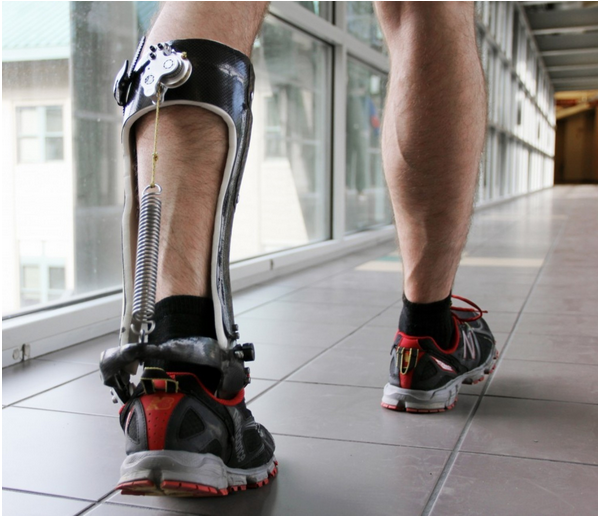
The latest exoskeleton technology doesn't need an outside power source to boost your strength. It harnesses the power of your own muscles to put a spring in your step instead. And soon baby boomers could be using it to keep hiking and jogging just a few years longer.
Read The Article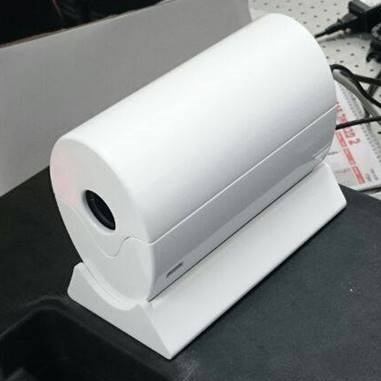
For the crew of the Starship Enterprise, Star Trek's "Tricorder" was an essential tool, a multifunctional hand-held device used to sense, compute, and record data in a threatening and unpredictable universe. It simplified a number of Starfleet tasks, scientific or combat-related, by beaming sensors at objects to obtain instant results.
The Tricorder is no longer science fiction. An invention by Tel Aviv University researchers may be able to turn smartphones into powerful hyperspectral sensors, capable of identifying the chemical components of objects from a distance. Prof. David Mendlovic of TAU's School of Electrical Engineering and his doctoral student, Ariel Raz, have combined the two necessary parts of this invention: an optical component and image processing software.
Read The Article
Fort Detrick and U.S. Army leadership, alongside federal, state and local officials, broke ground on an estimated $35 million dollar project to install solar panels that will provide Fort Detrick with renewable energy on Wednesday, April 1.
The project will include 60,000 solar panels on 67 of the 399 acres of land on Fort Detrick’s Area B. The micro-grid-compatible solar facility will provide approximately 10 percent of Fort Detrick’s energy requirement and will significantly contribute to the Army’s energy security objectives.
Read The Article
An experimental therapy developed by researchers at Albert Einstein College of Medicine of Yeshiva University cut in half the time it takes to heal wounds compared to no treatment at all. Details of the therapy, which was successfully tested in mice, were published online in the Journal of Investigative Dermatology. The research presented in this manuscript was funded by grants from the National Institute of Health (R01 GM109909) and the Telemedicine and Advanced Technology Research Center (TATRC) at the U.S. Army Medical Research and Materiel Command (USAMRMC) through award W81XWH1210379. Support was also granted by the Women’s Dermatologic Society academic grant program.
Read The Article
"We envision that our nanoparticle therapy could be used to speed the healing of all sorts of wounds, including everyday cuts and burns, surgical incisions, and chronic skin ulcers, which are a particular problem in the elderly and people with diabetes," said study co-leader David J. Sharp, Ph.D., professor of physiology & biophysics at Einstein. Dr. Sharp and his colleagues had earlier discovered that an enzyme called fidgetin-like 2 (FL2) puts the brakes on skin cells as they migrate towards wounds to heal them. They reasoned that the healing cells could reach their destination faster if their levels of FL2 could be reduced. So they developed a drug that inactivates the gene that makes FL2 and then put the drug in tiny gel capsules called nanoparticles and applied the nanoparticles to wounds on mice. The treated wounds healed much faster than untreated wounds. The research presented in this manuscript was funded by grants from the National Institute of Health (R01 GM109909) and the Telemedicine and Advanced Technology Research Center (TATRC) at the U.S. Army Medical Research and Materiel Command (USAMRMC) through award W81XWH1210379. Support was also granted by the Women's Dermatologic Society academic grant program.
Read The Article
(Bronx, NY)—An experimental therapy developed by researchers at Albert Einstein College of Medicine of Yeshiva University cut in half the time it takes to heal wounds compared to no treatment at all. Details of the therapy, which was successfully tested in mice, were published online in the Journal of Investigative Dermatology.
"We envision that our nanoparticle therapy could be used to speed the healing of all sorts of wounds, including everyday cuts and burns, surgical incisions, and chronic skin ulcers, which are a particular problem in the elderly and people with diabetes," said study co-leader David J. Sharp, Ph.D., professor of physiology & biophysics at Einstein.
Read The Article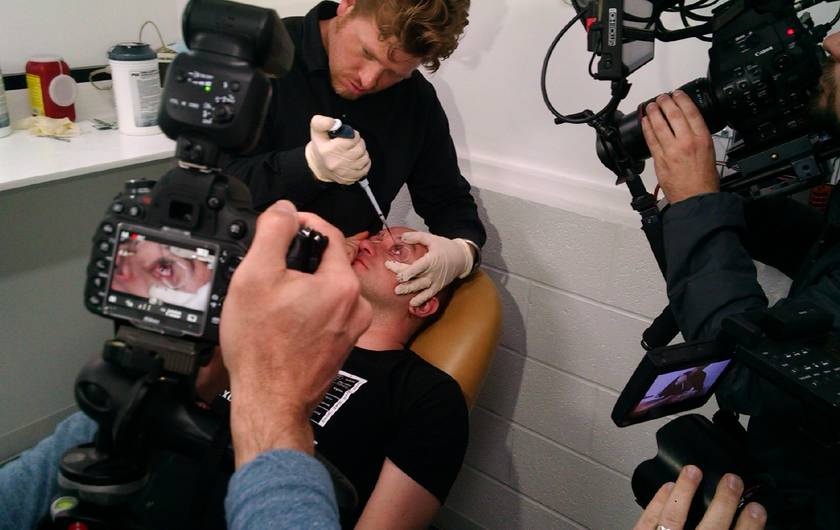
In "people becoming superhuman" news, a small independent research group has figured out how to give humans night vision, allowing them to see over 50 meters in the dark for a short time. Science for the Masses, a group of biohackers based a couple hours north of Los Angeles in Tehachapi, California, theorized they could enhance healthy eyesight enough that it would induce night vision. To do this, the group used a kind of chlorophyll analog called Chlorin e6 (or Ce6), which is found in some deep-sea fish and is used as an occasional method to treat night blindness.
Read The Article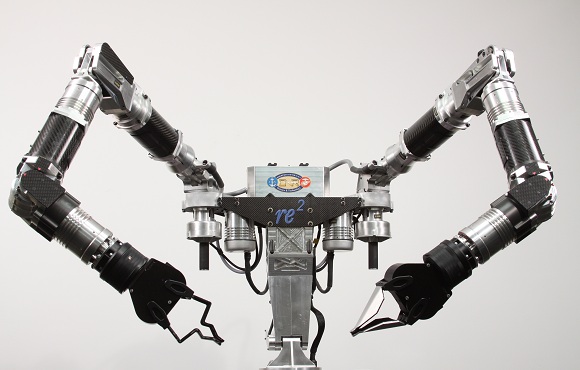
Combat medics deliver life-saving treatment to wounded soldiers during wartime, but when it comes to protecting themselves from danger, there are few options. Now one local company is working to help these professionals to do their jobs more effectively and safely under hostile conditions.
Read The Article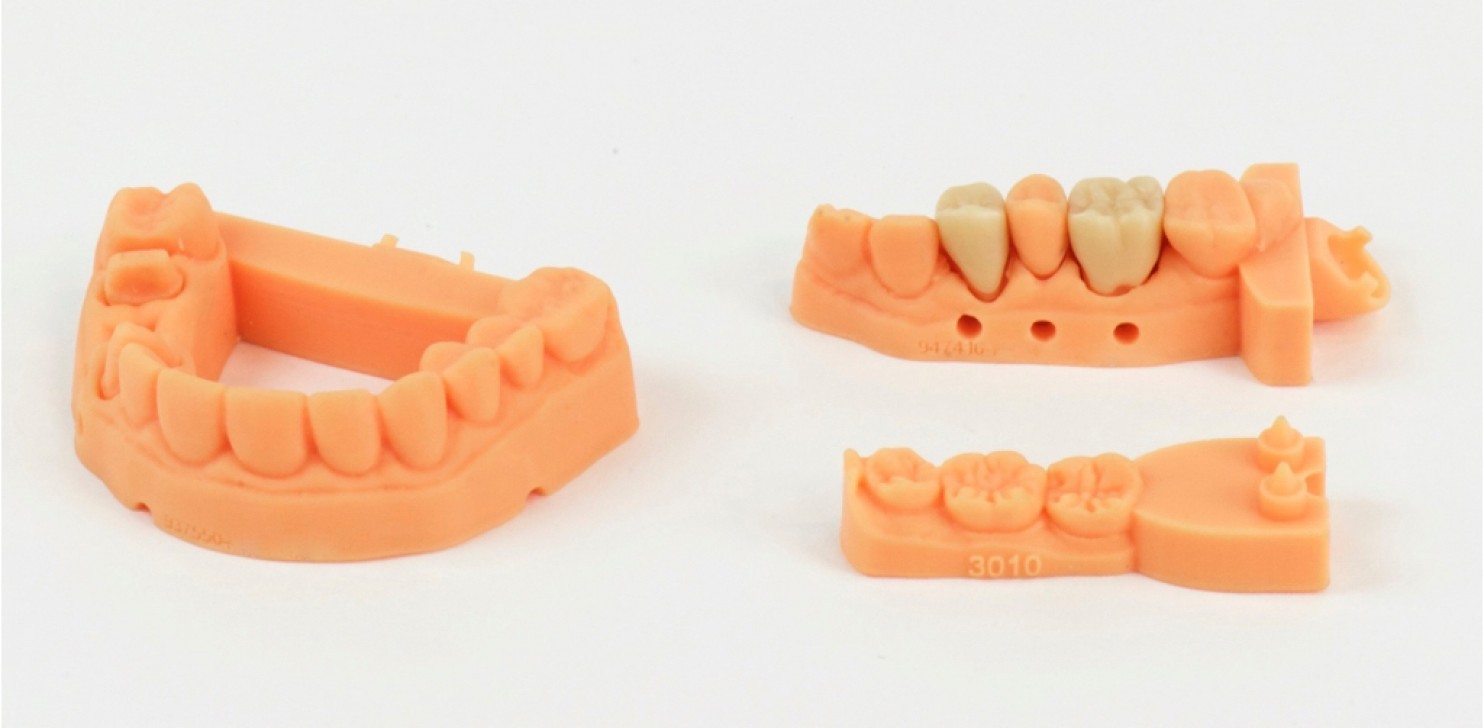
In an iconic scene in the movie "Terminator 2," the robotic villain T-1000 rises fully formed from a puddle of metallic goo. The newest innovation in 3-D printing looks pretty similar, and that's no mistake: Its creators were inspired by that very scene.
Read The Article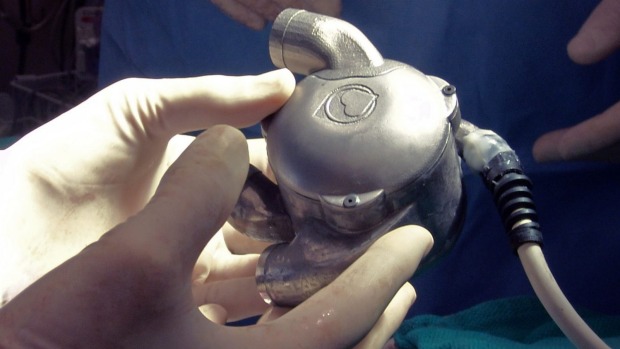
A ground-breaking bionic heart without a pulse is hoped to be saving lives within three years.
The world-first device was designed by Brisbane engineer Dr Daniel Timms, who instigated the project in 2001 while studying at the Queensland University of Technology.
It recently passed its biggest test when it was successfully transplanted into a live and healthy sheep, and Dr Timms now wants it ready for human trials by 2018.
Read The Article
With its star turn on Jeopardy now basically ancient history, IBM's Watson supercomputer is ready for the limelight again. And judging by a recent spate of partnerships, that light could shine brightest in the mHealth arena.
Read The Article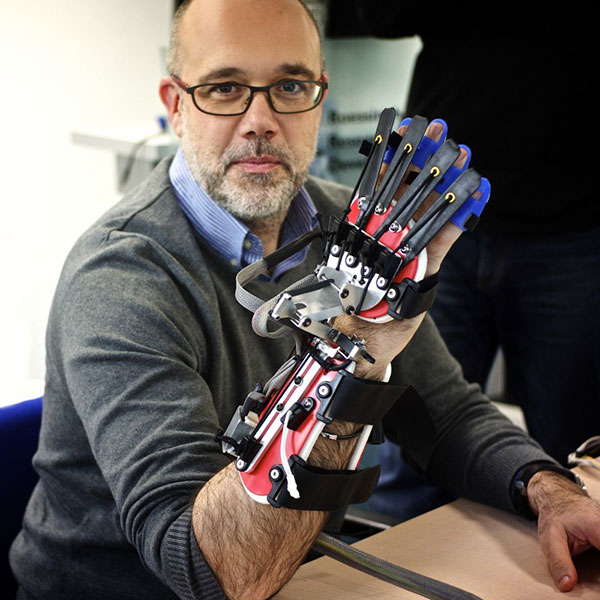
A team of European researchers have been developing robotic gloves aimed at helping stroke victims to receive advanced therapy at home. The SCRIPT project (Supervised Care and Rehabilitation Involving Personal Tele-robotics) has led to two prototypes that help develop hand and wrist movement while recording monitoring and recording the patient’s ability to perform a variety of tasks.
Read The Article
Telehealth and mHealth initiatives are playing a significant role in the proposed 2016 budget for the Department of Veterans Affairs, with officials laying out more than $1 billion for specific telehealth programs and devoting more than half of the proposed IT budget for so-called "customized" programs.
Read The Article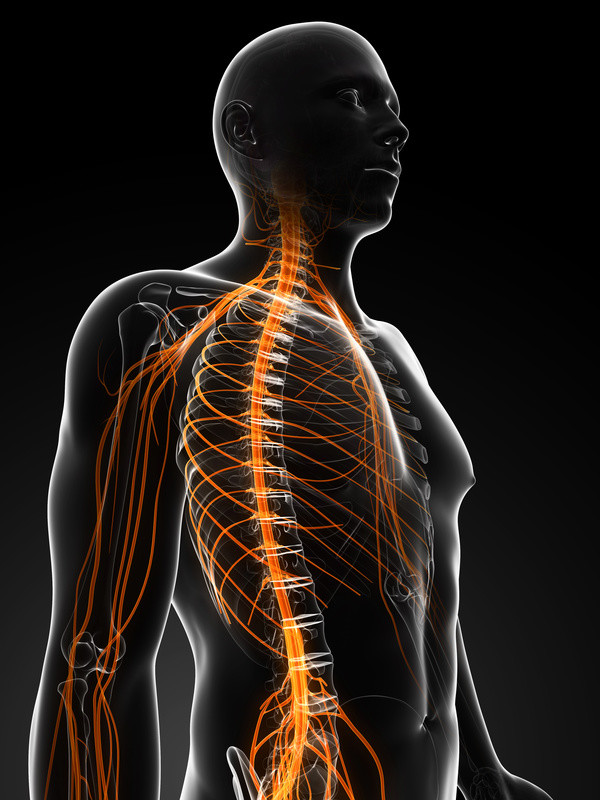
Three Austrian men have become the first in the world to undergo a new technique called "bionic reconstruction", enabling them to use a robotic prosthetic hand controlled by their mind, according to new research. All three men suffered for many years with brachial plexus injuries and poor hand function as a result of motor vehicle and climbing accidents.
Read The Article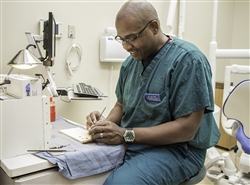
BETHESDA, Md., Feb. 26, 2015 – Louis Gilbert creates handmade, lifelike prosthetic eyes in the dental laboratory at Walter Reed National Military Medical Center here.
Gilbert, a retired Navy dental technician, received training in maxillofacial prosthetics at the Naval Postgraduate Dental School. The craft involves creating replacements for missing ears, noses and other facial parts missing due to birth defects, cancer, combat or trauma, he explained.
Read The Article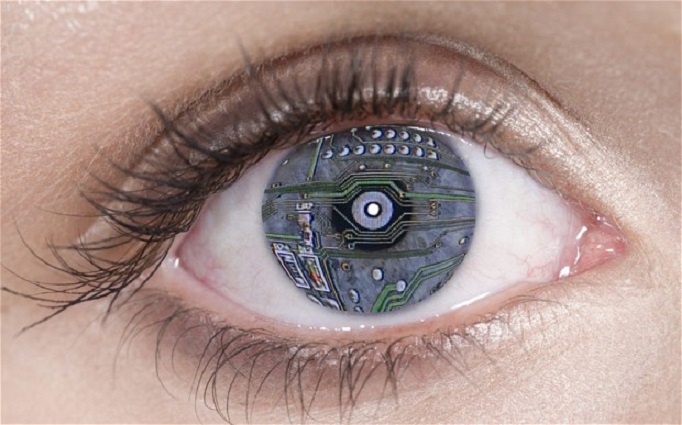
A brain-computer interface has been developed by the US Defence Research Projects Agency (DARPA) that is capable of laying a heads-up display over a user's natural vision.
>p>The "cortical modem" also holds the potential to cure sight loss and enable "electronic telepathy and telekinesis" according to noted futurist Peter Rothman, writing for H+ Magazine. Read The Article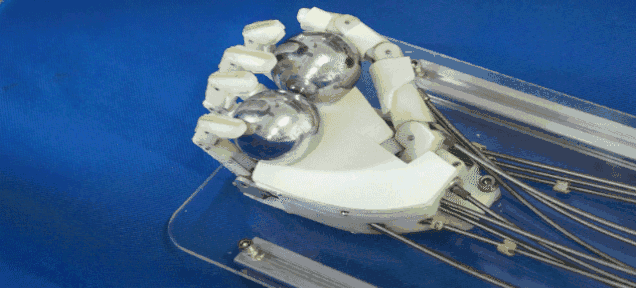
Baoding balls are two metal balls that are rotated over and over again in one hand for meditation, exercise or rehab purposes. A lot of dexterity and focus and strength is necessary to pull of the rotation. Not everyone can do it! This robotic arm controlled by wires can though. Look at those fake flexible fingers move.
>p>To be clear, in advanced exercises the Baoding balls shouldn't be touching but I'll cut the robot arm some slack since it's a beginner. The robotic hand is impressive because it does such a good job of replicating the nimbleness and flexibility of our human hands. Read The Article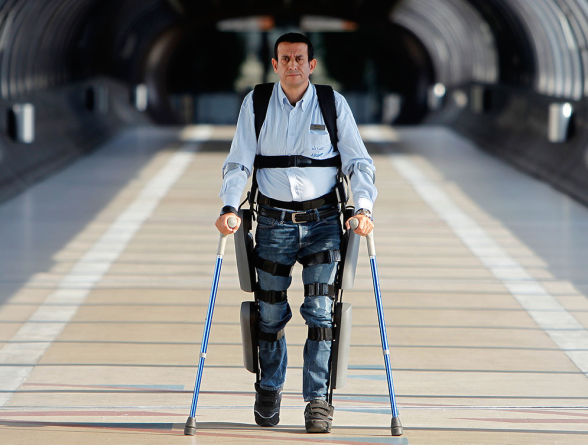
People who can’t stand can now walk by putting on a device called Rewalk. Rewalk is a robotic exoskeleton that works like a mechanical set of legs and crutches.
It was unveiled over the weekend at React, a spinal cord injury recovery gym in Dallas, Texas. Marcela Turnage, who hasn’t walked in 12 years after suffering a spinal injury in a car accident, used Rewalk to walk at the gym.
Read The Article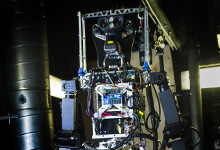
Scientists unveiled a firefighting robot prototype Feb. 4 at the Naval Future Force Science & Technology EXPO, revealing details about its successful demonstrations last fall aboard the USS Shadwell, a decommissioned Navy vessel.
Read The Article
MacDILL AIR FORCE BASE, Fla., Feb. 4, 2015 – The Tactical Assault Light Operator Suit is being designed to give protection and capabilities to U.S. special operators, but the process of designing it may be as revolutionary as the suit itself, said U.S. Special Operations Command officials.
TALOS started 18 months ago, after incidents downrange caused SOCOM to take a hard look at how special operators are outfitted.
Read The Article
Tony Stark’s Iron Man suit is cool. But it’s not real.
The Tactical Assault Light Operators Suit is cool, too. But it is real and may soon be protecting America’s special operations forces going into harm’s way.
Read The Article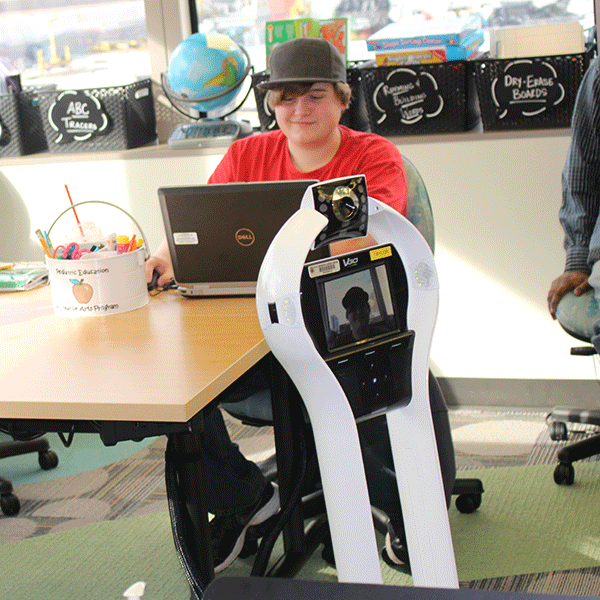
Kids stuck in the hospital during the school year must still keep up with their studies, a pretty big challenge if you miss all the classes. Learning alone and without your teacher to lead the way is no fun and can make kids fall behind the rest of the class. Now a couple of kids at Children’s Cancer Hospital at The University of Texas MD Anderson Cancer Center can attend their own classes remotely thanks to VGo robots.
Read The Article
Imagine arriving at a major medical center with a life threatening medical condition. Imagine now that this facility has no paging or cellular phone capability. How will the right doctor be alerted that you need treatment to save your life?
Read The Article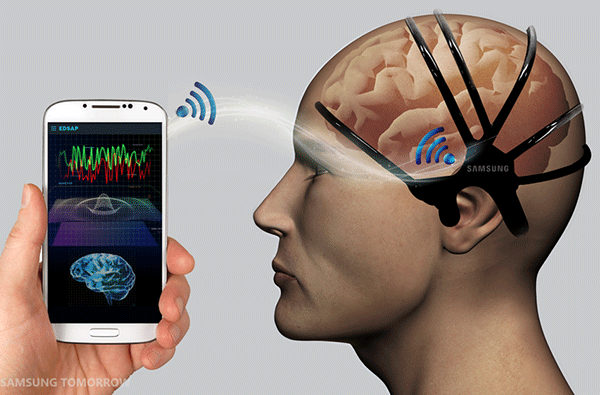
While brain monitoring using EEG is not a new technique, advancements in technology may allow it to be used for detecting a variety of conditions that are currently hard to diagnose. Samsung is continuing to show evidence that it’s serious about getting a major foothold in the medical field with the announcement that it’s been working on a wearable EEG headset that can be used by patients themselves to detect signs of stroke as well as for regular monitoring to gauge stress levels, analyze sleep, and other brain health parameters that are often not measured quantitatively.
Read The Article
It was 11:45 a.m. and Dr. Christopher Bailey's laptop was chirping, indicating a patient was on the line.
"Hi, this is Dr. Bailey. Can you hear me?" Yes, the female patient said, she could. She'd been violently coughing for days and was losing her voice, she explained. Her eye had turned red and she couldn't sleep.
Read The Article
TATRC’s Dr. Thomas “Brett” Talbot, (MMSIC’s Chief Scientist and Principal Medical Expert at the University of Southern California (USC)’s Institute for Creative Medical Technologies), along with his colleagues at USC, received an award on January 13, 2015 at the International Meeting on Simulation in Healthcare (IMSH). USC’s Virtual Standard-ized Patient was announced as the winner of the “Serious Games and Virtual Environments Contest”. They were rec-ognized as the best new innovation of 2015!
Read The Article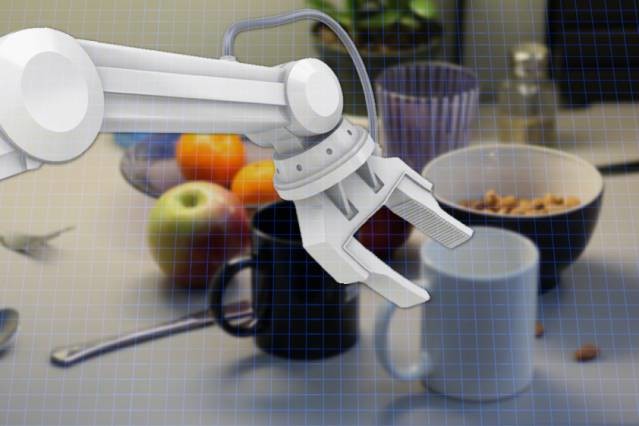
For household robots ever to be practical, they'll need to be able to recognize the objects they're supposed to manipulate. But while object recognition is one of the most widely studied topics in artificial intelligence, even the best object detectors still fail much of the time. A new algorithm could enable household robots to better identify objects in cluttered environments.
Read The Article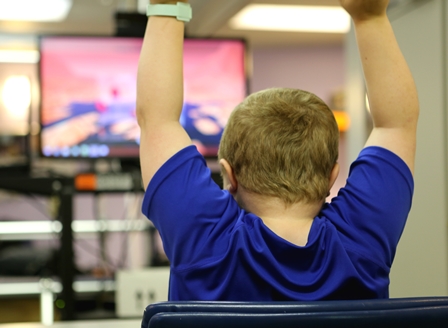
Researchers at Nationwide Children's Hospital have developed a way to measure upper extremity movement in patients with muscular dystrophy using interactive video game technology. Their hope is to expand inclusion criteria for clinical trials to incorporate patients using wheelchairs.
Read The Article
A new report published in the Journal of the American Medical Association throws a wet blanket on the wearable craze, saying such devices won't help improve health outcomes until they get the patient engagement dilemma figured out.
Read The Article
Remote monitoring is playing an increasingly important role in helping the elderly and chronically ill live safely and independently in their homes, but the tools also significantly reduce health care costs, according to a new study from Fallon Health, a nationally recognized innovative health insurer and care provider, and Healthsense, the fastest growing provider of technology-enabled care solutions.
Read The Article
NEW ORLEANS, Jan. 8, 2015 (GLOBE NEWSWIRE) -- INTERNATIONAL MEETING ON SIMULATION IN HEALTHCARE (IMSH) – From January 10-14, 2015 Applied Research Associates (ARA, www.ara.com) is showcasing BioGears® (www.biogearsengine.com) at IMSH 2015 in the government agency R &D Exhibit Showcase, Booth C. IMSH 2015 is the 15th annual premier educational and networking event for healthcare simulation professionals from all disciplines.http://globenewswire.com/news-release/2015/01/08/696052/10114743/en/ARA-BIOGEARS-R-OPEN-SOURCE-HUMAN-PHYSIOLOGY-ENGINE-SHOWCASE-AT-IMSH-2015.html#sthash.bz4D8yAJ.dpuf
Read The Article
Ohio-based HealthSpot says its kiosk model is more effective than online telehealth platforms – and it's pointing to a recent pilot in San Diego as proof.
For nine months, a kiosk sitting in the front lobby of the San Diego County office building offered the roughly 6,000 employees within a mile or two easy access to their Kaiser Health doctors. In that time period, 436 people used the kiosk for a medical appointment, and HealthSpot officials said every one rated that experience as the same or better than what they would have gotten at a doctor's office, giving it high marks for convenience, access and service, and saying they'd recommend it to friends.
Read The Article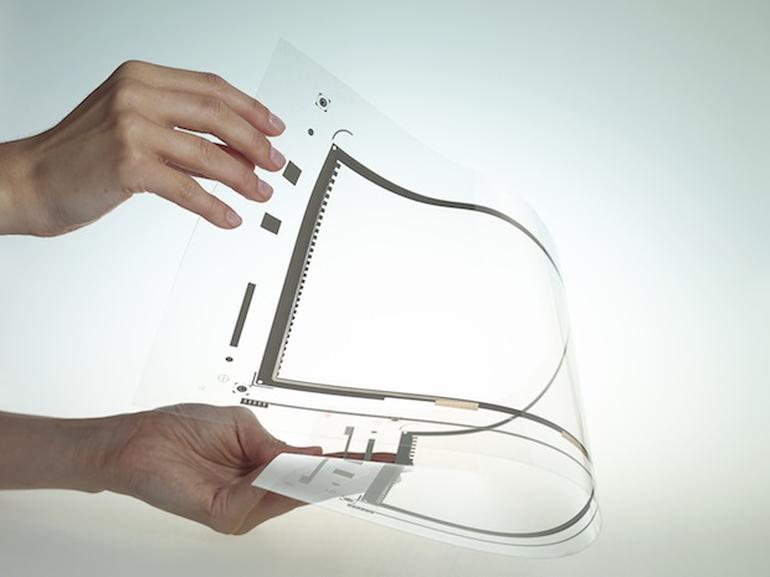
Can you imagine touch-sensitive displays and surfaces for everything from wearable devices and home appliances to mobile devices and car dashboards? These are just some of the applications Finnish nanotechnology company Canatu sees for its touch-sensitive and transparent carbon nanobud (CNB) films, which can make almost any surface into a touchscreen.
Read The Article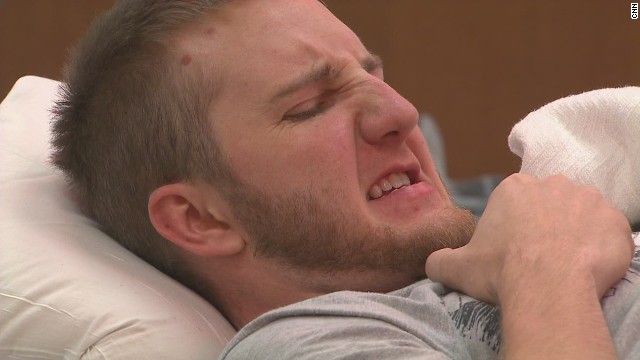
But on December 5, Goza, 26, got another chance.
Read The Article